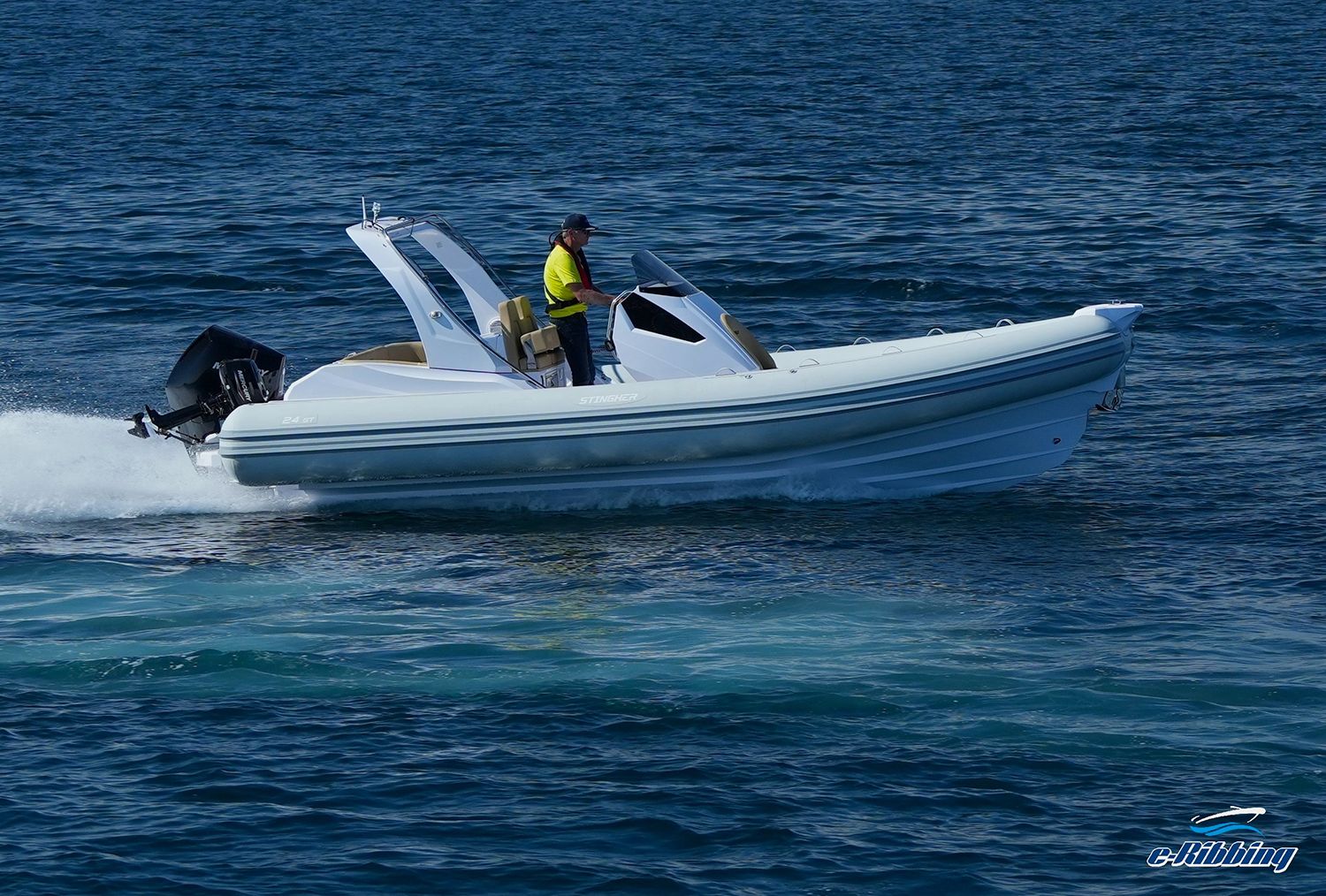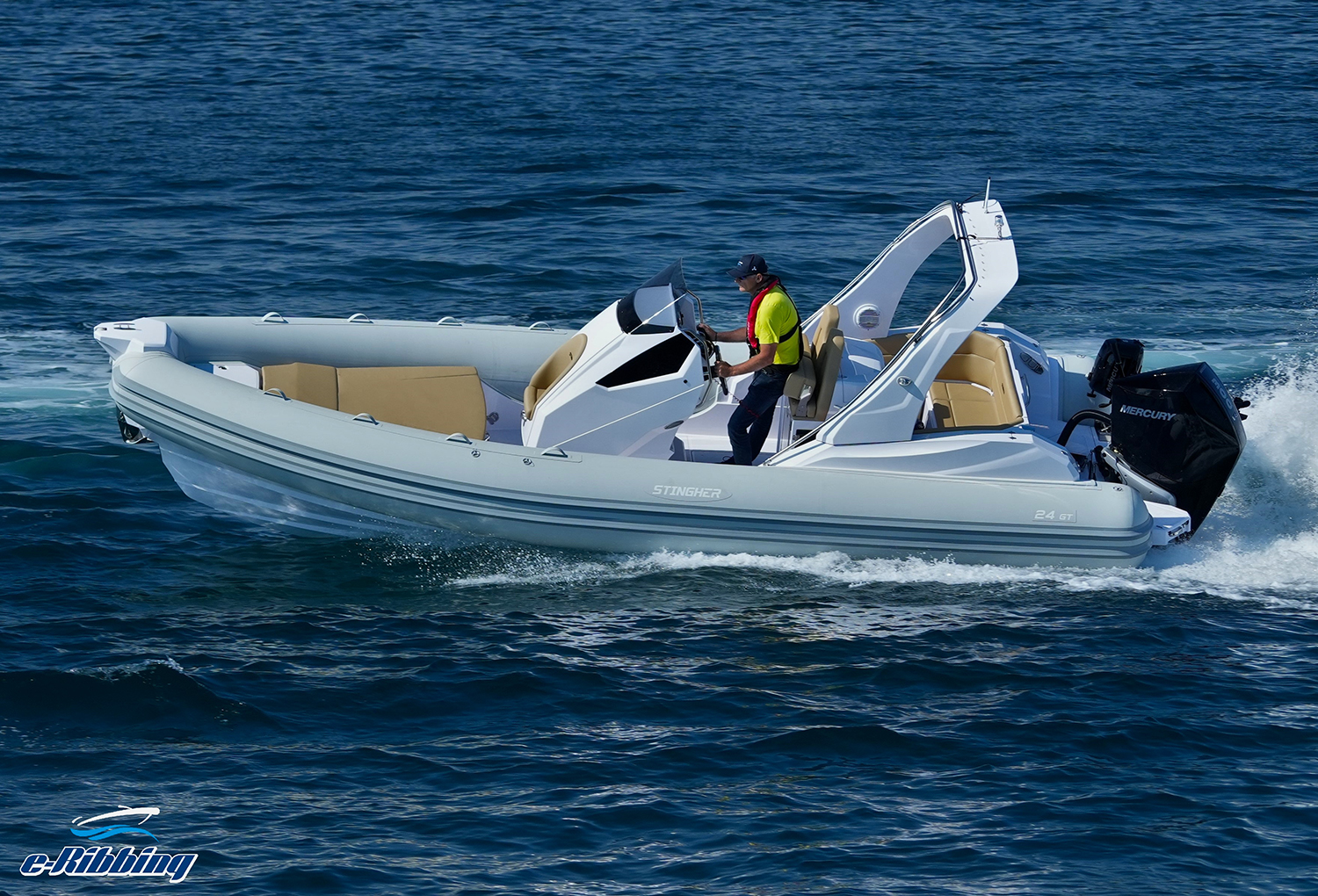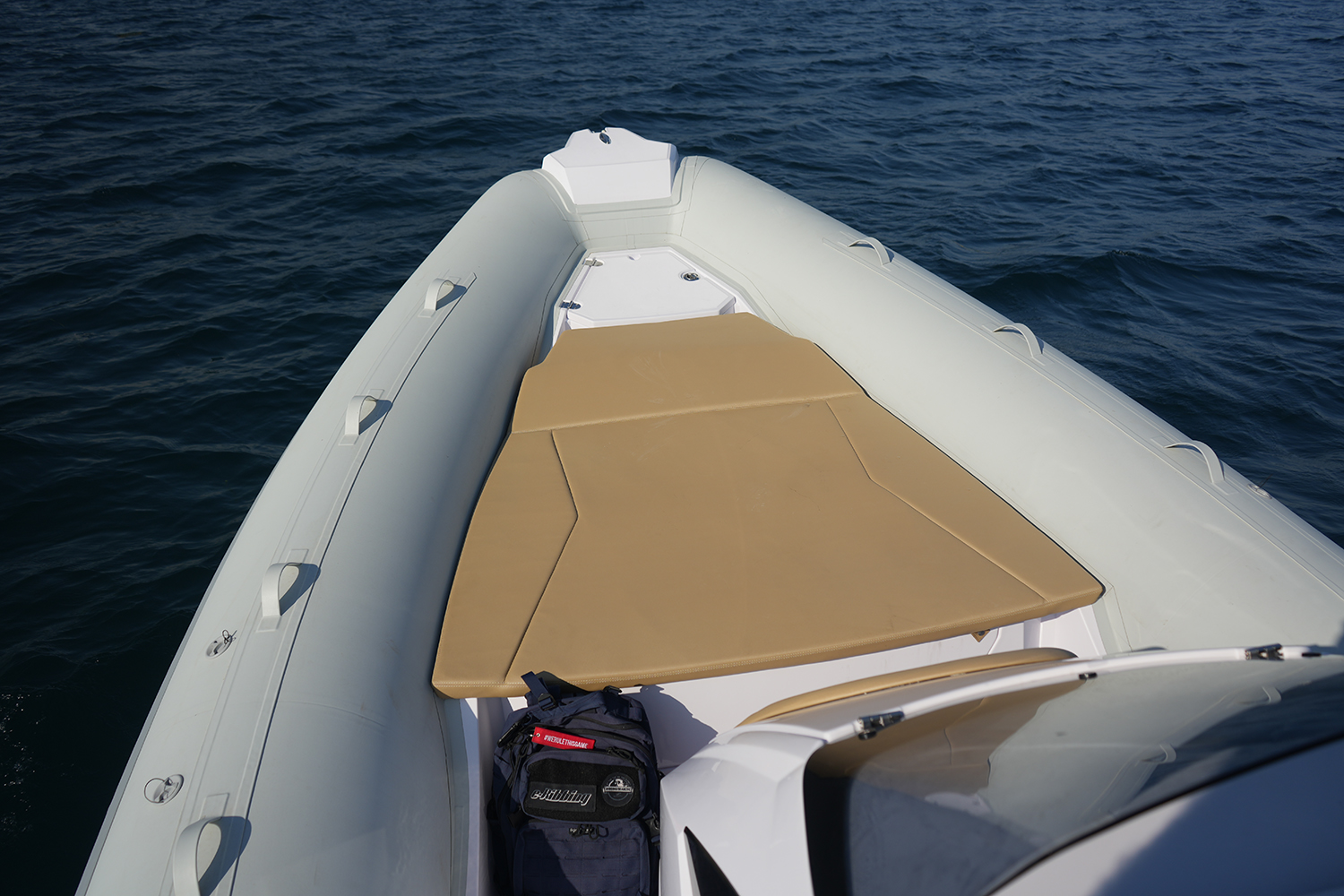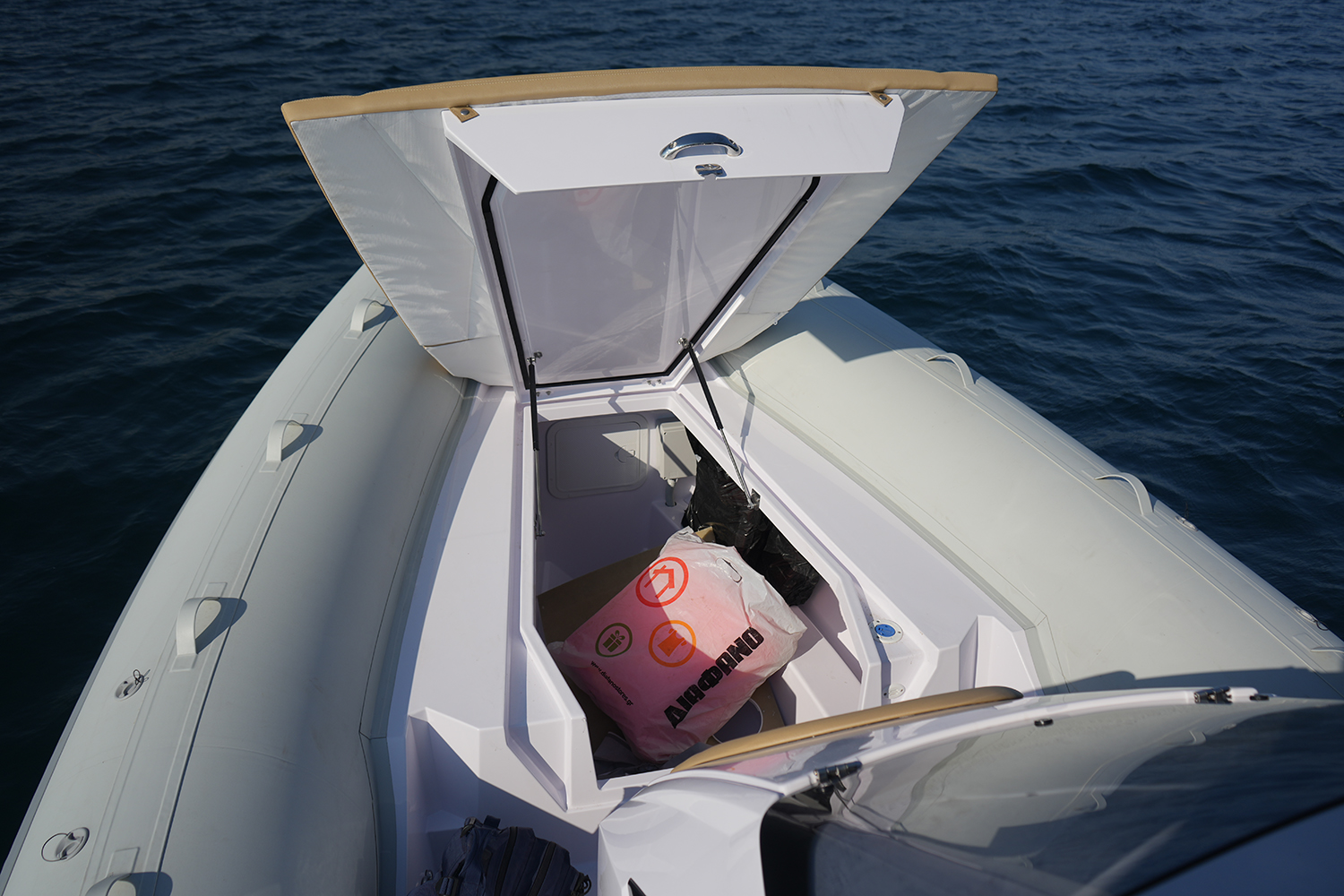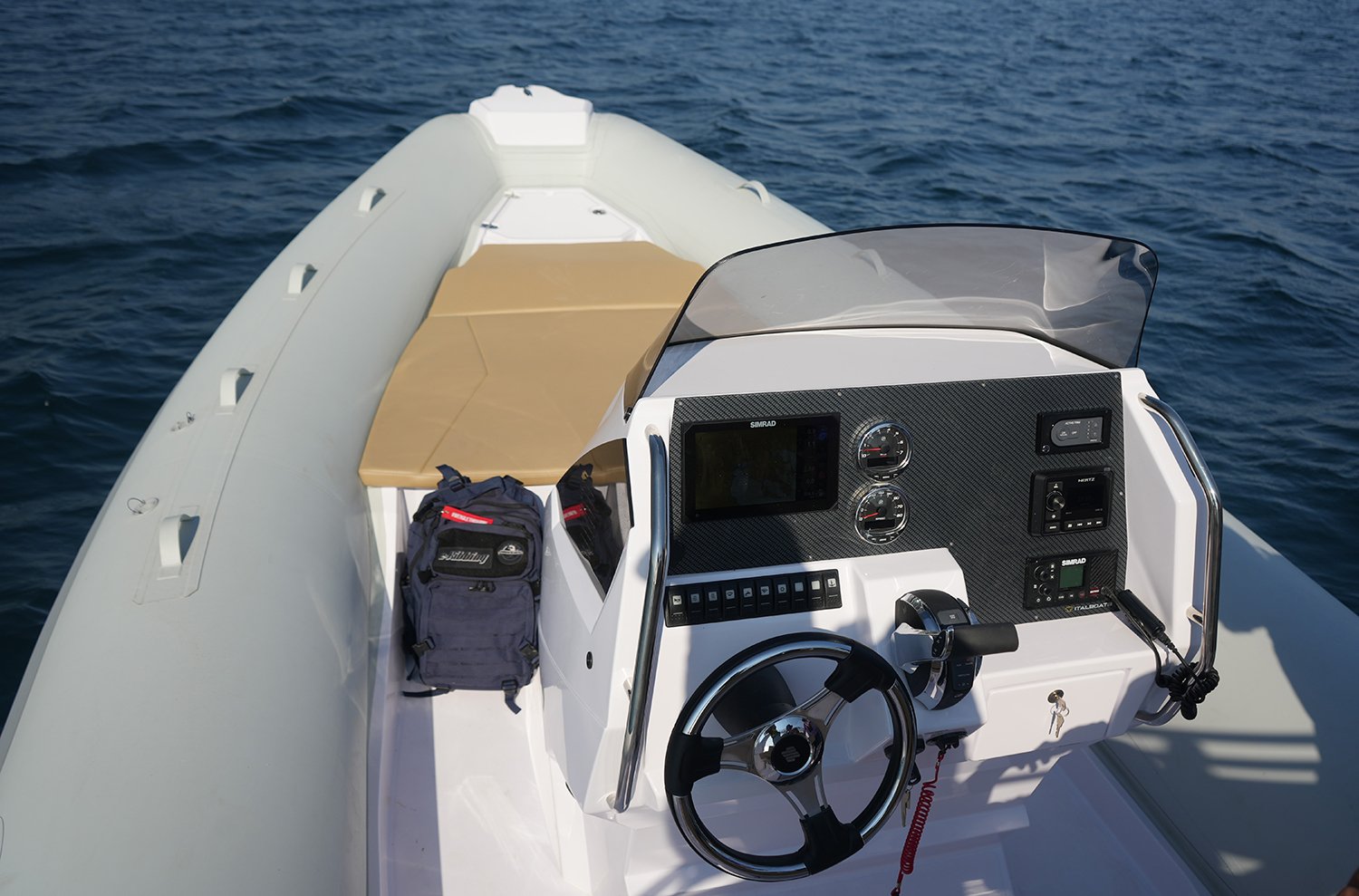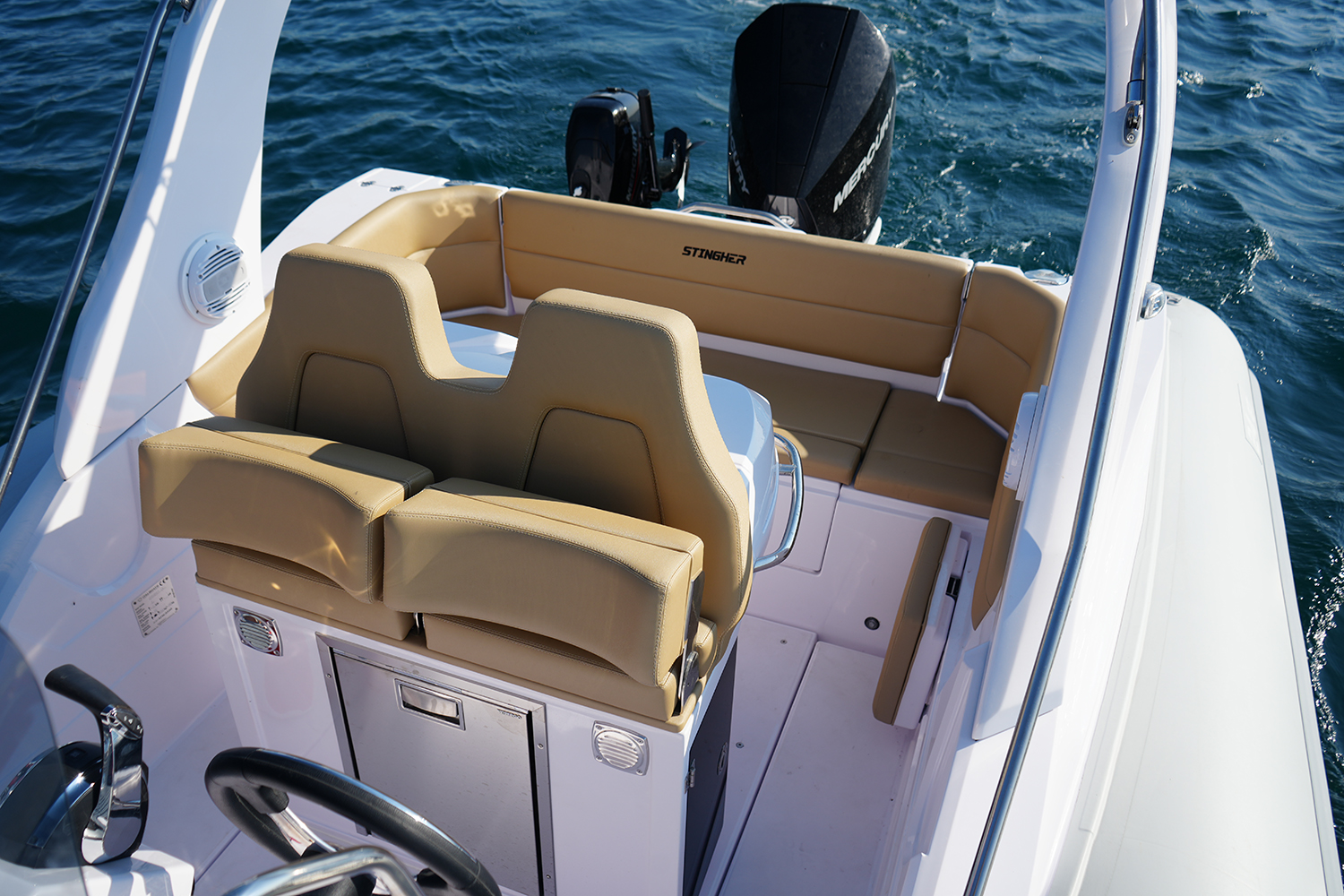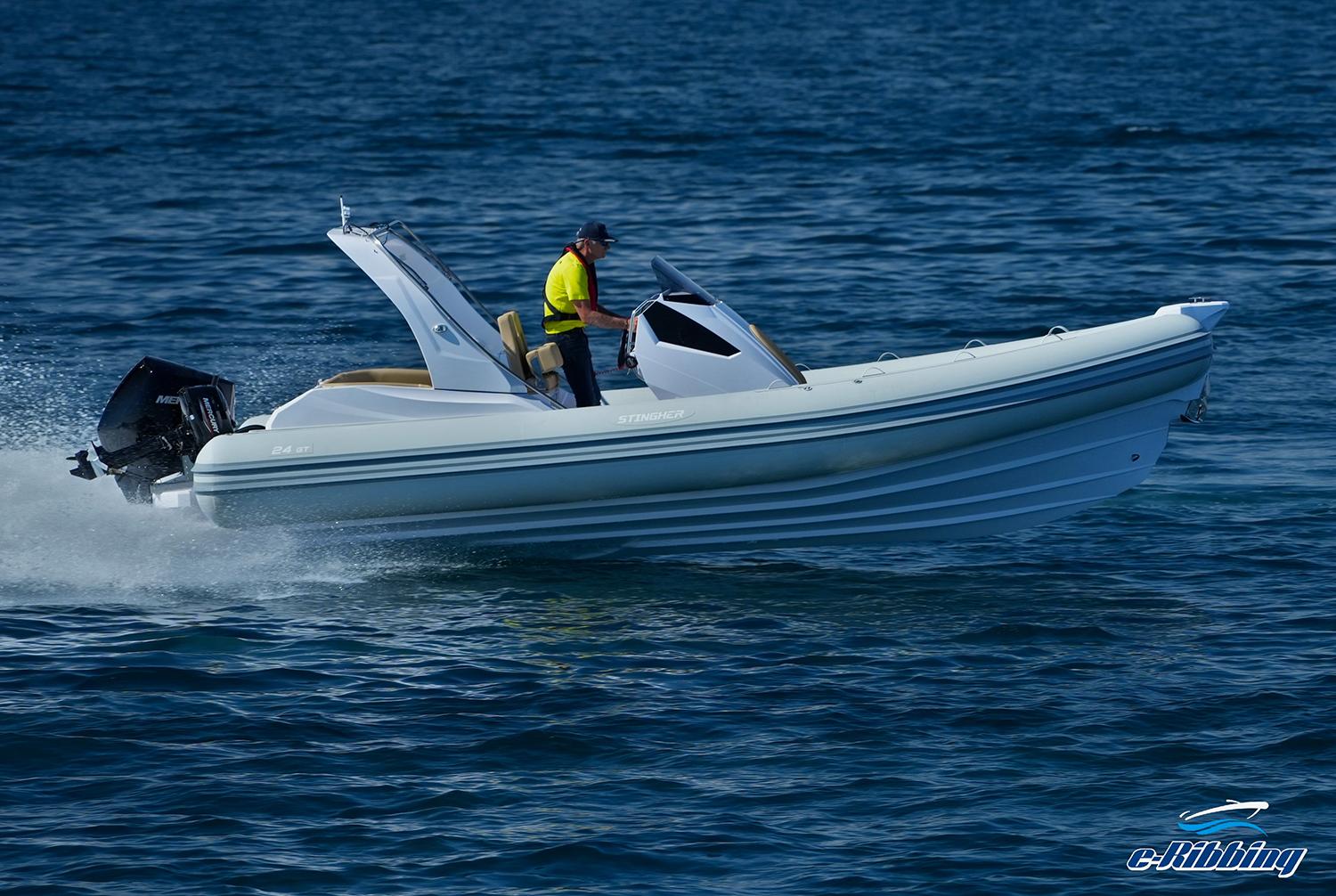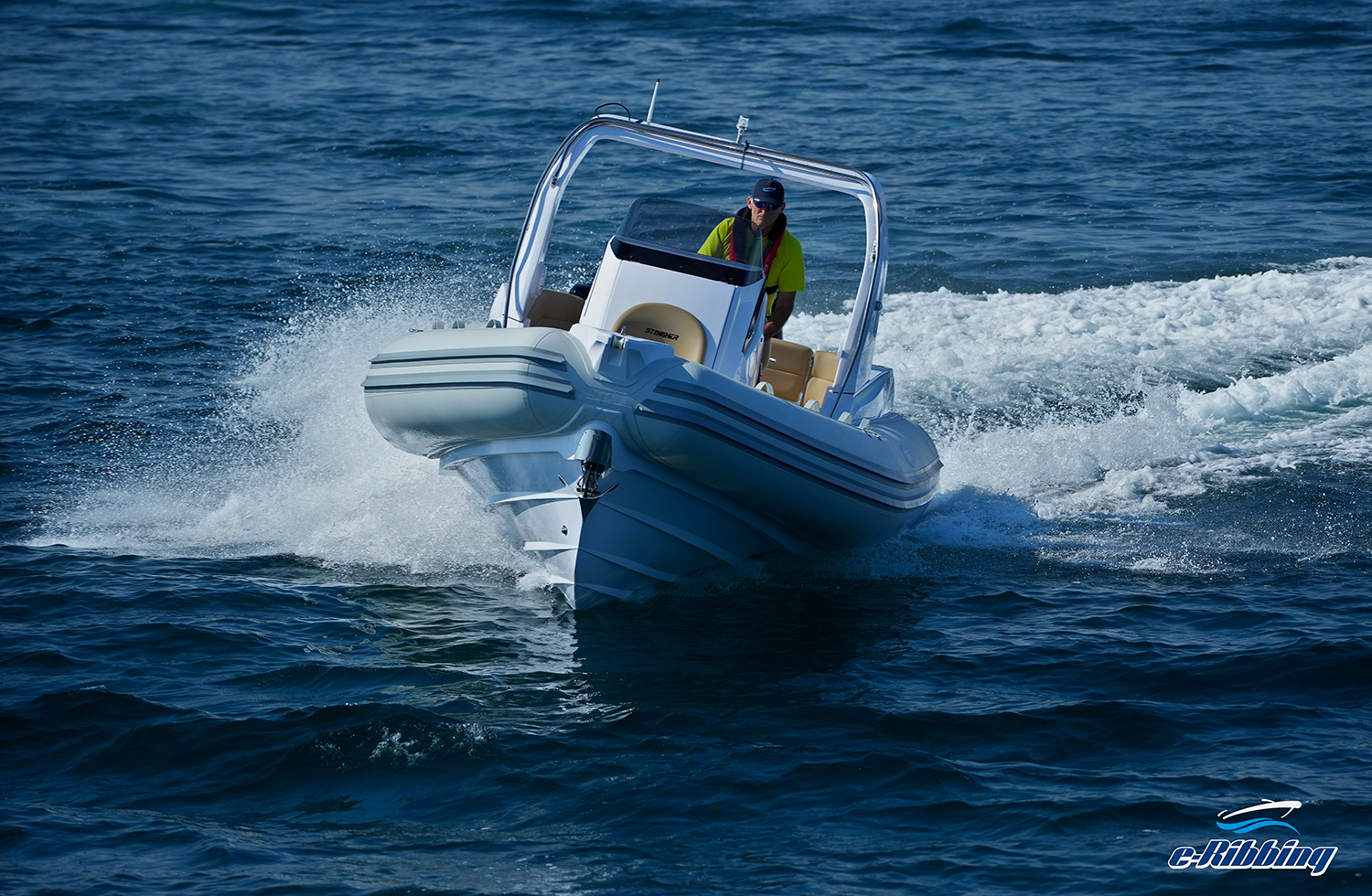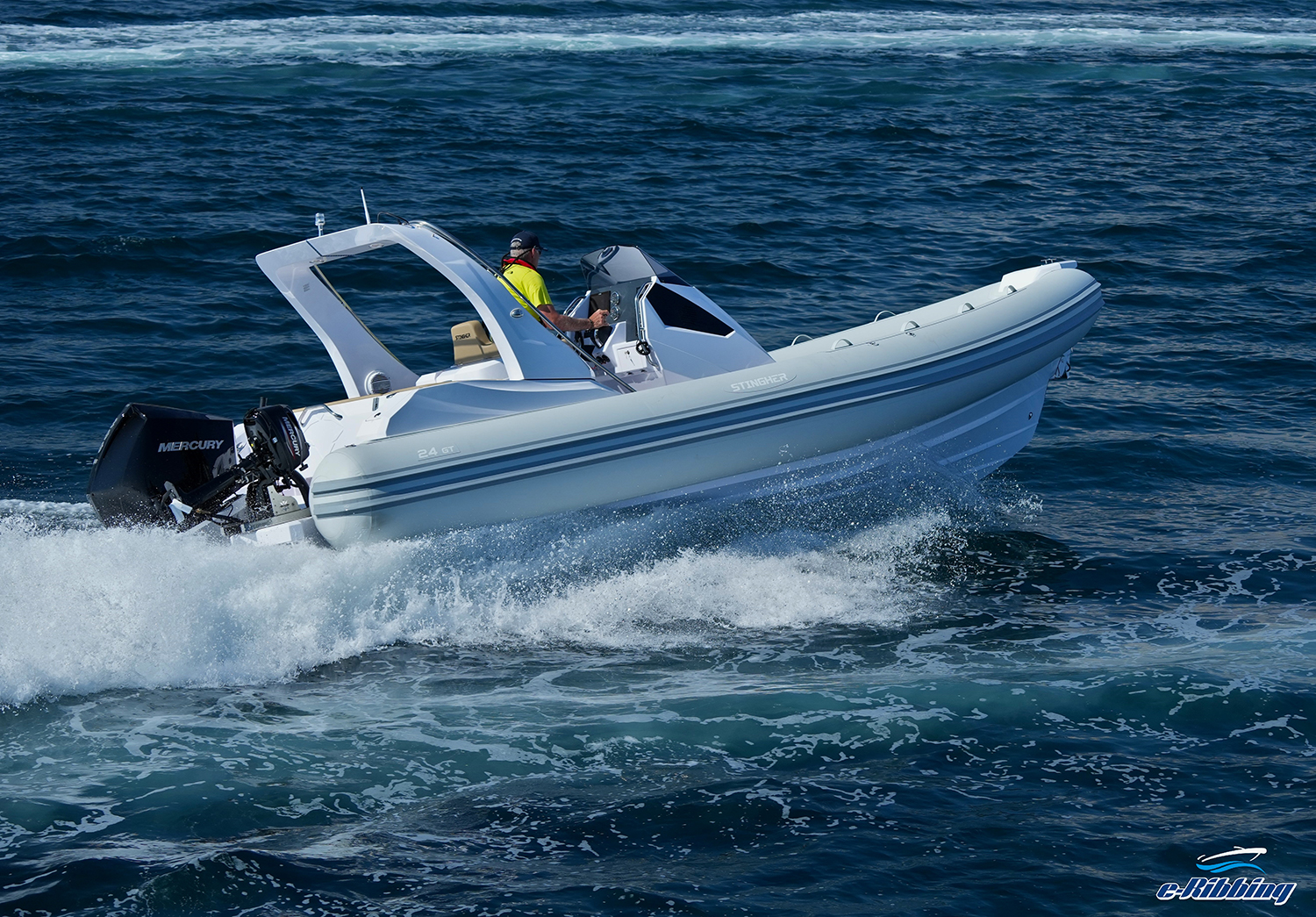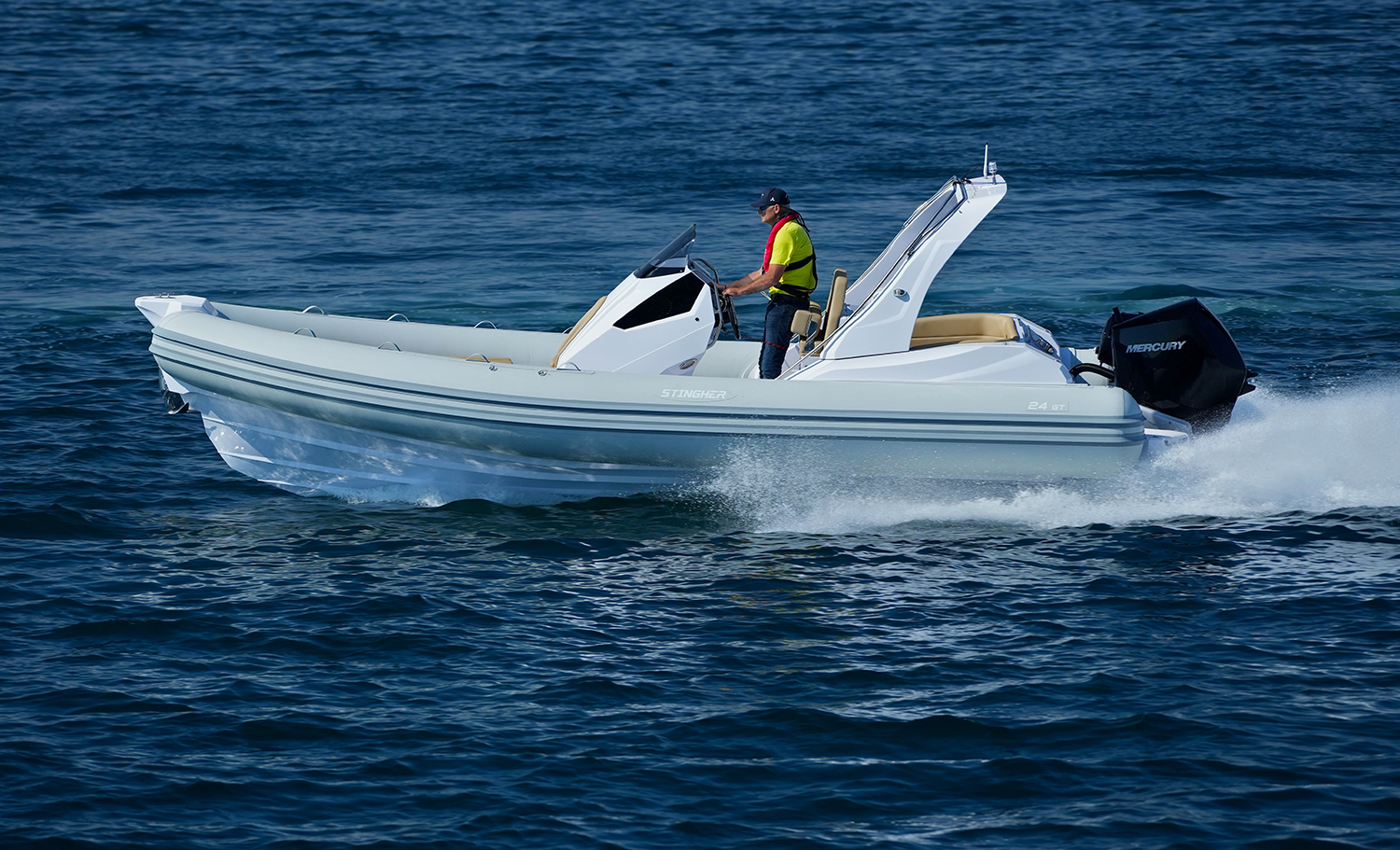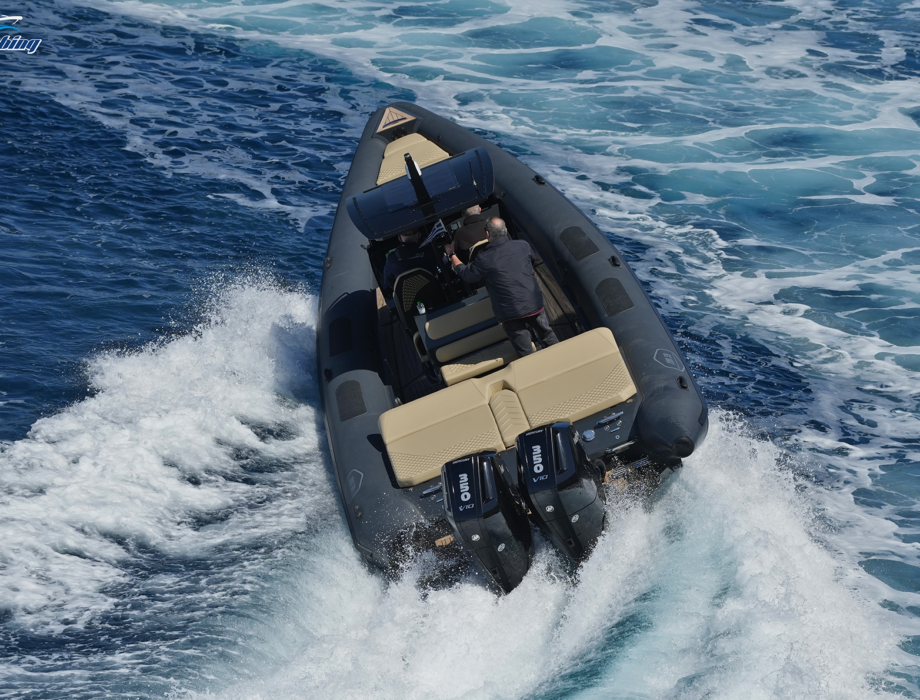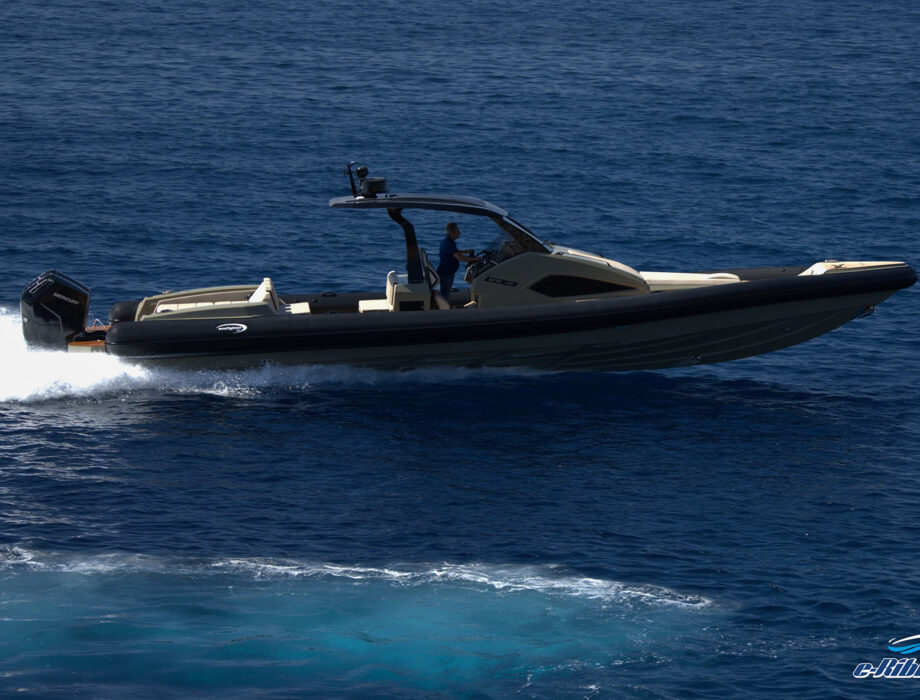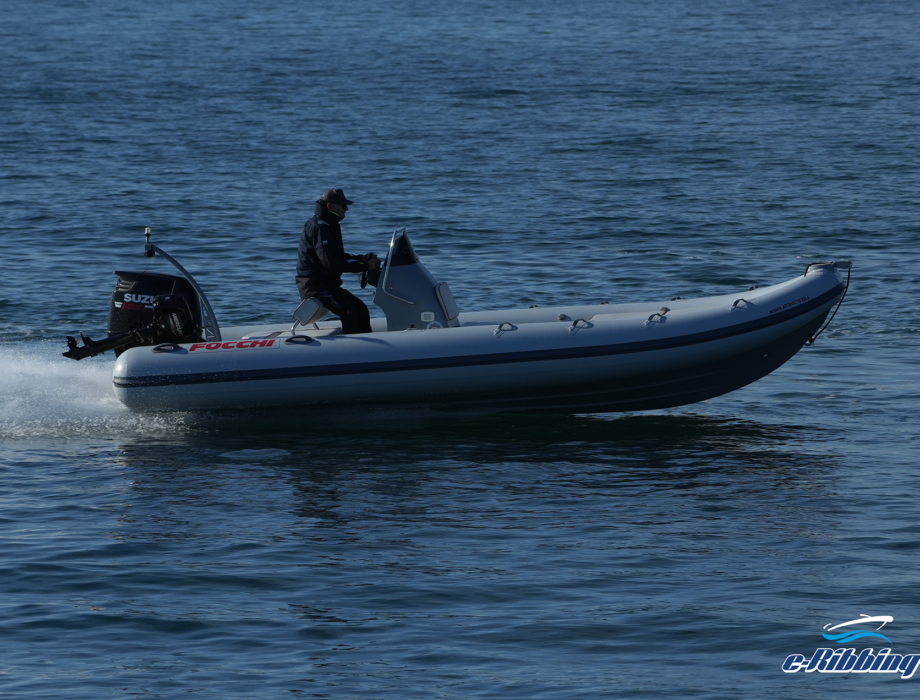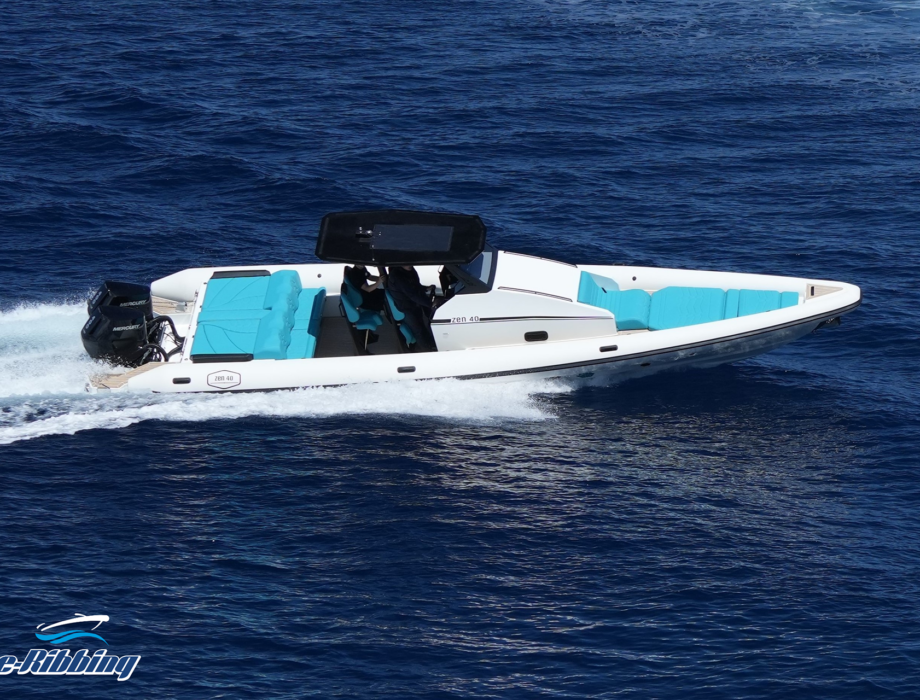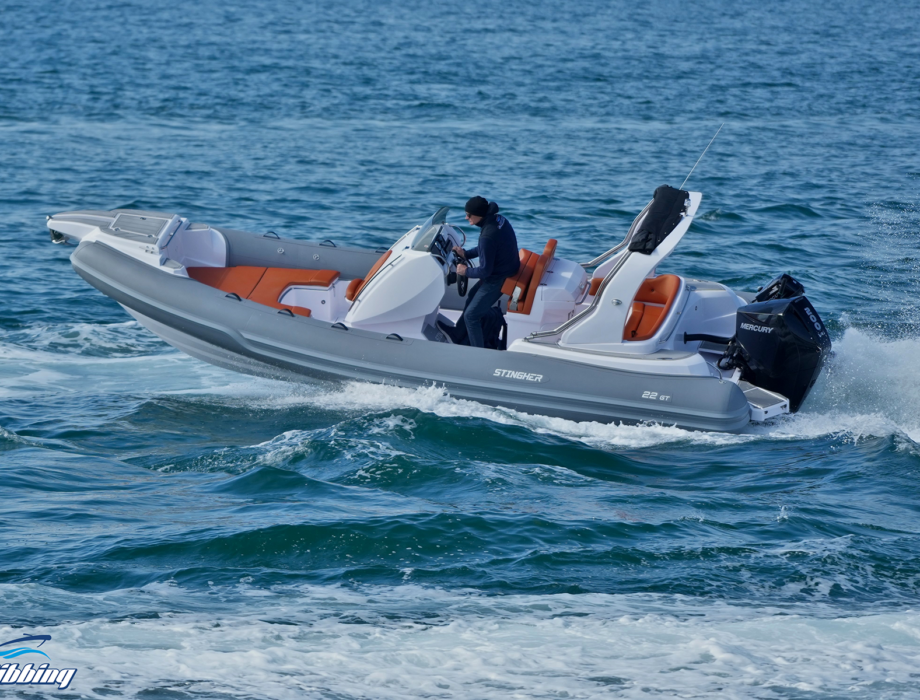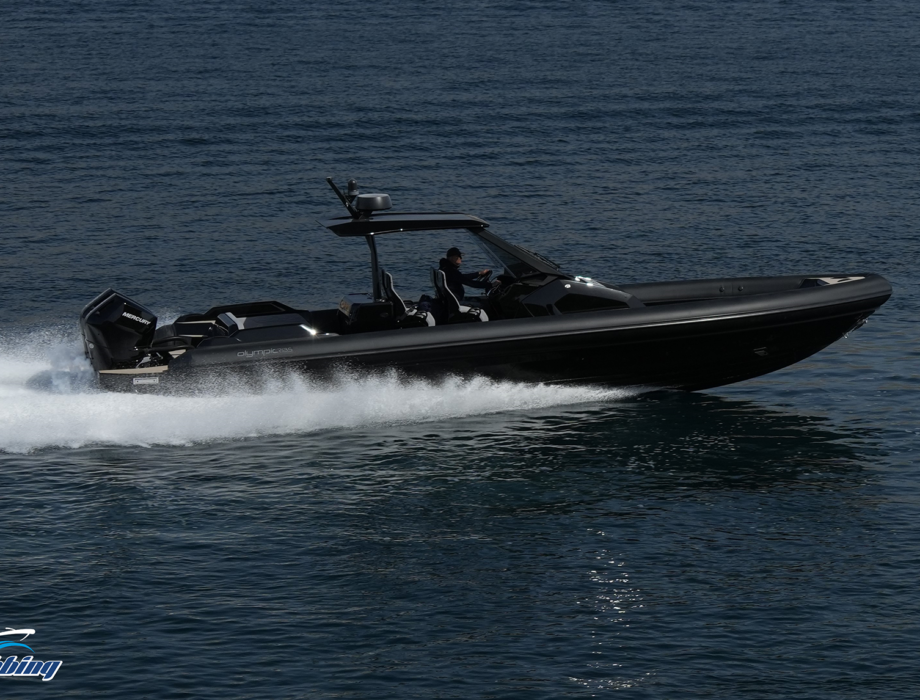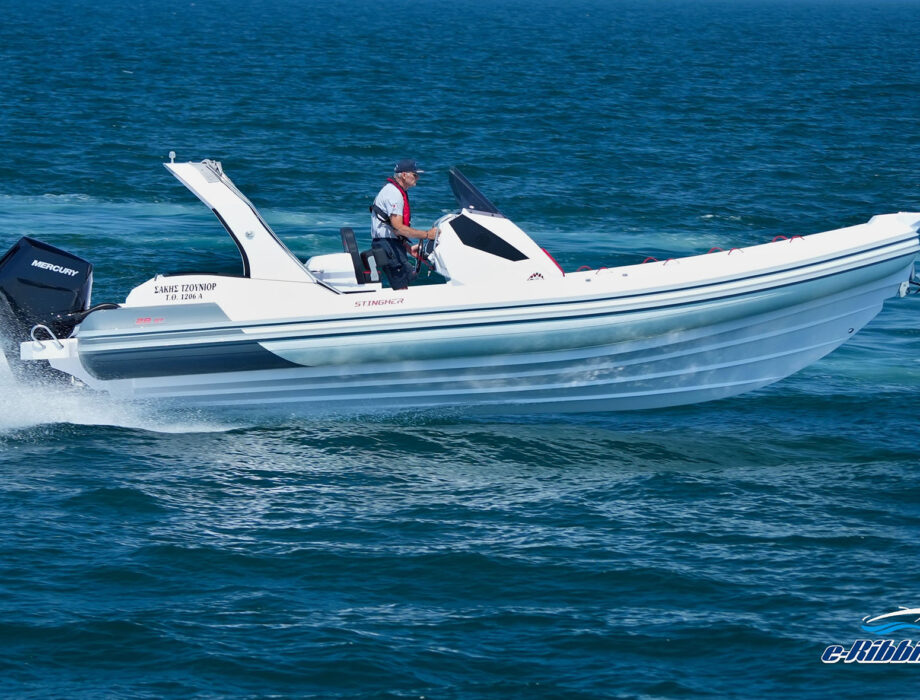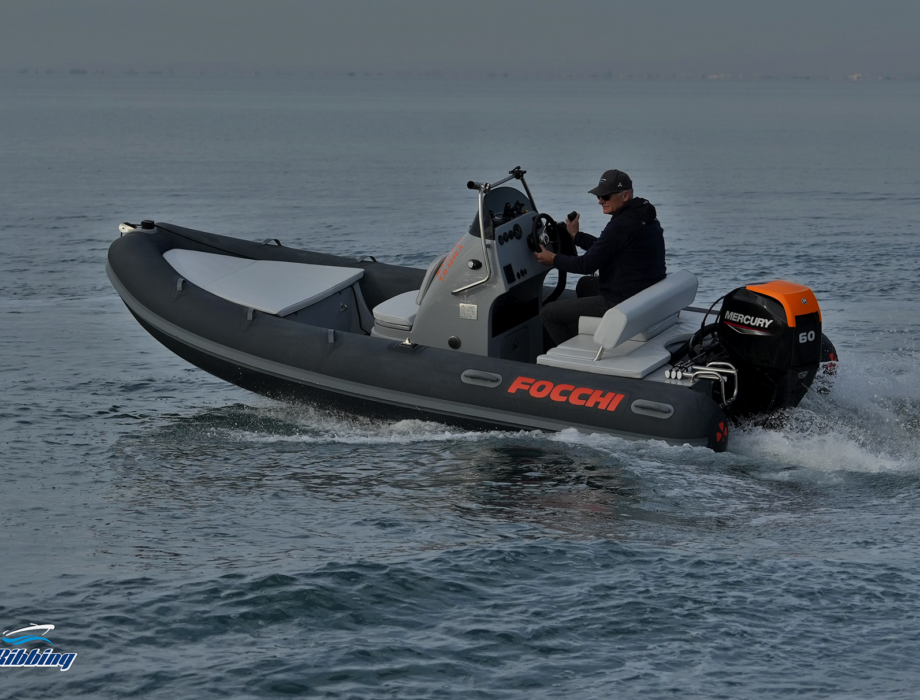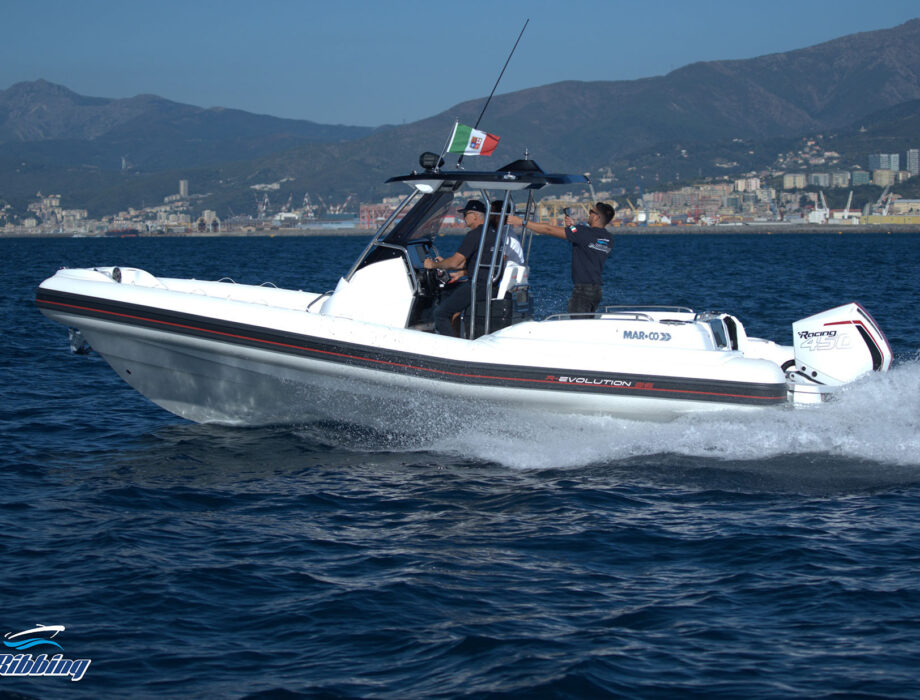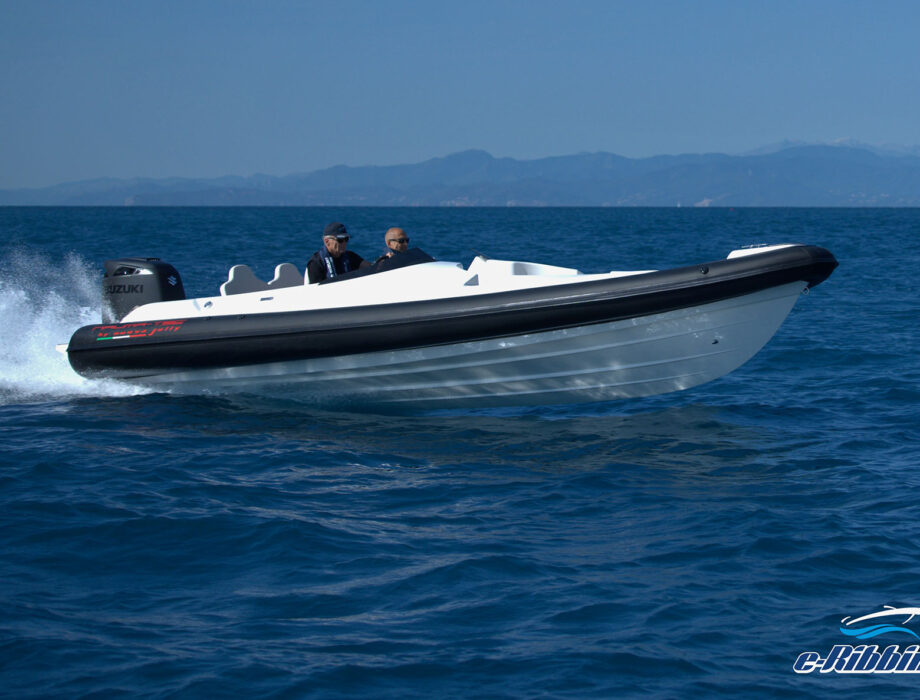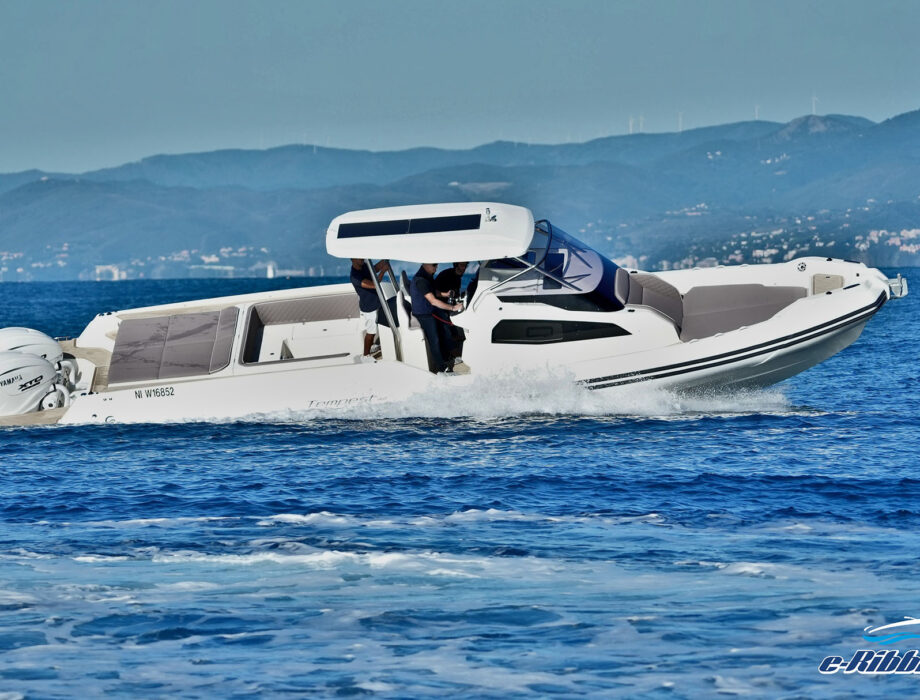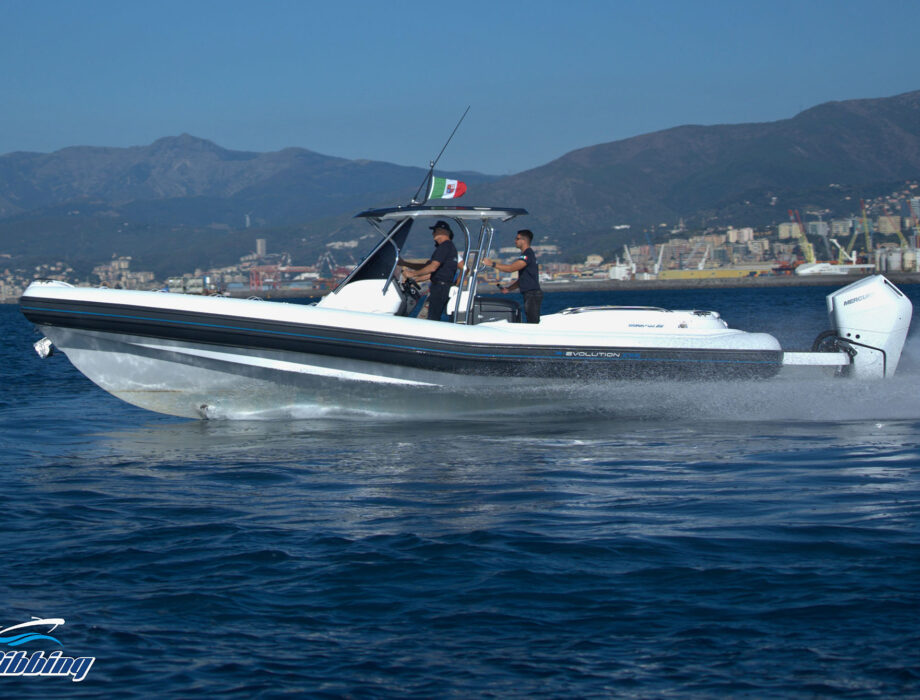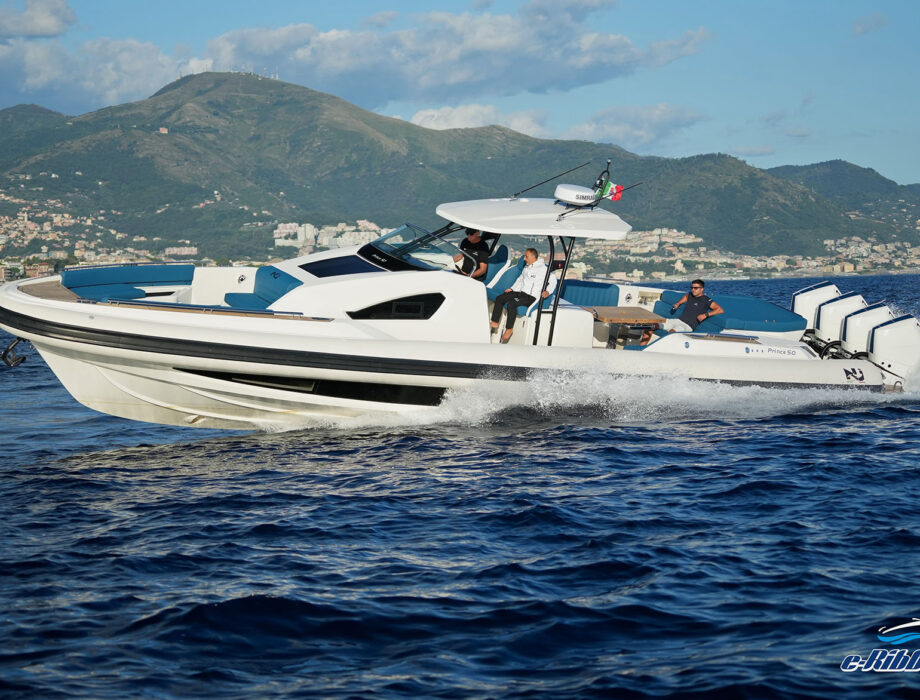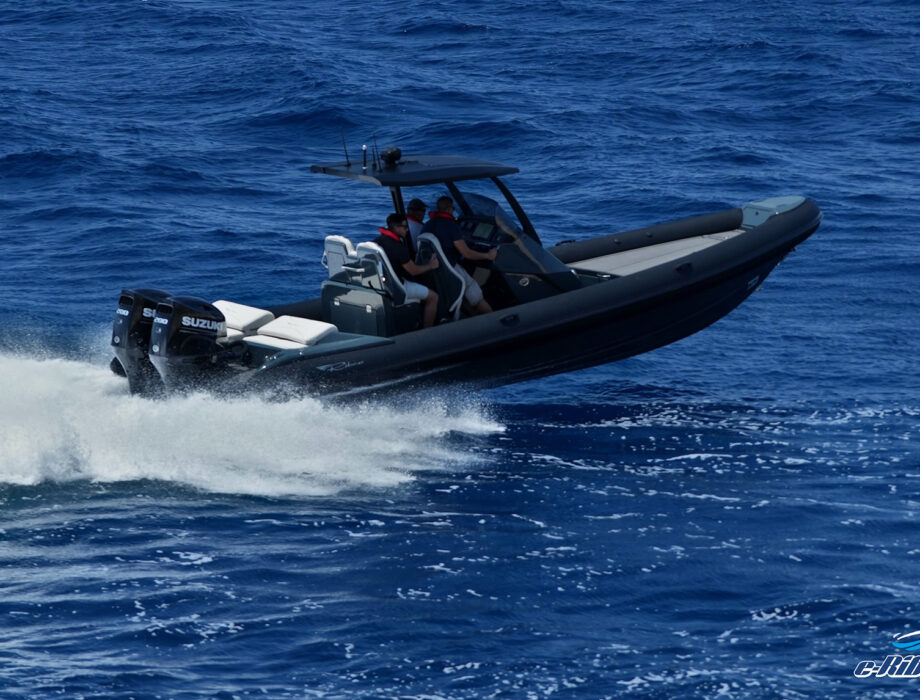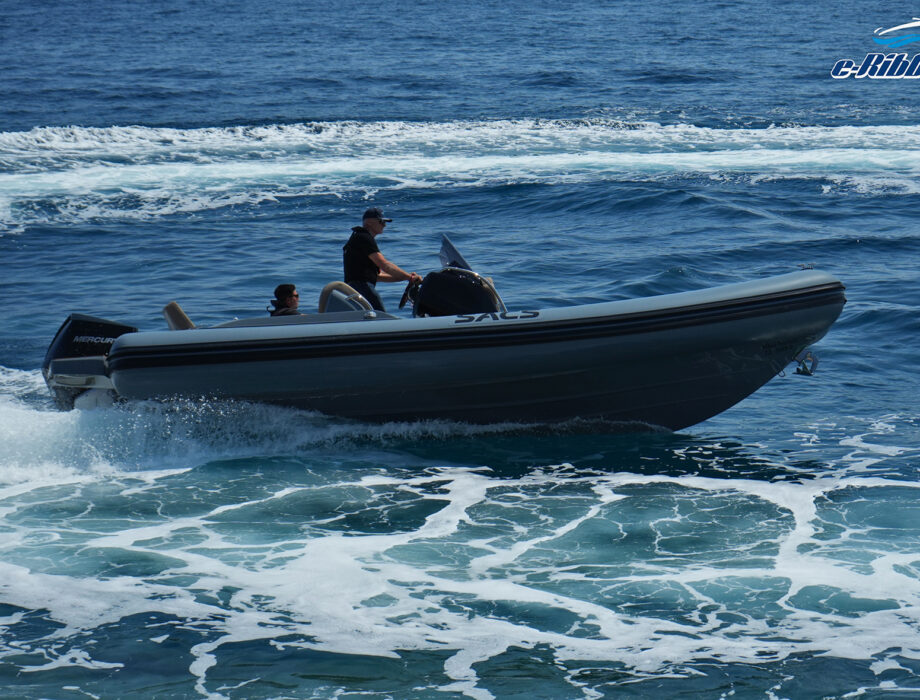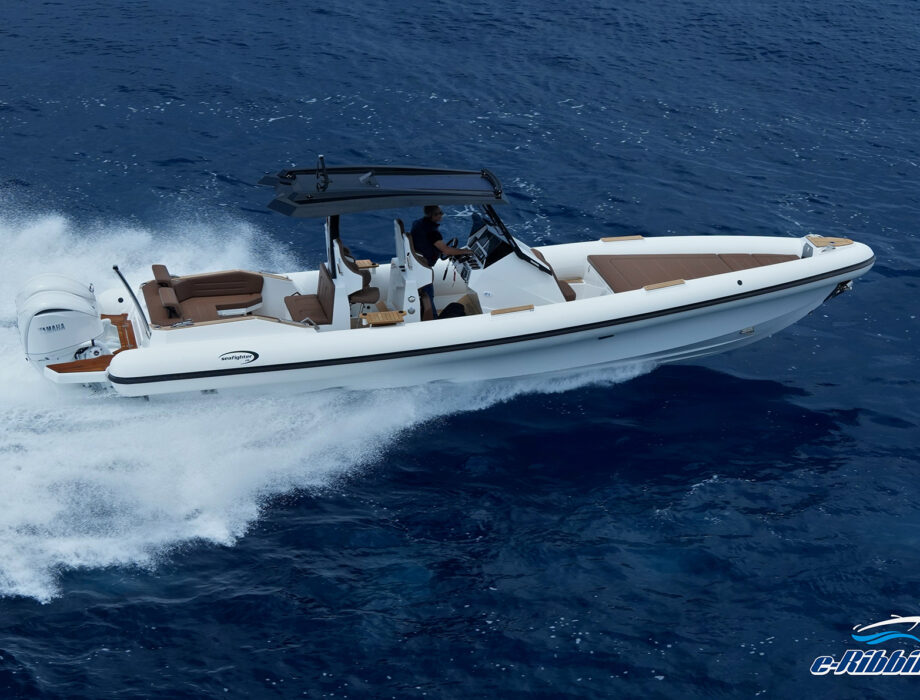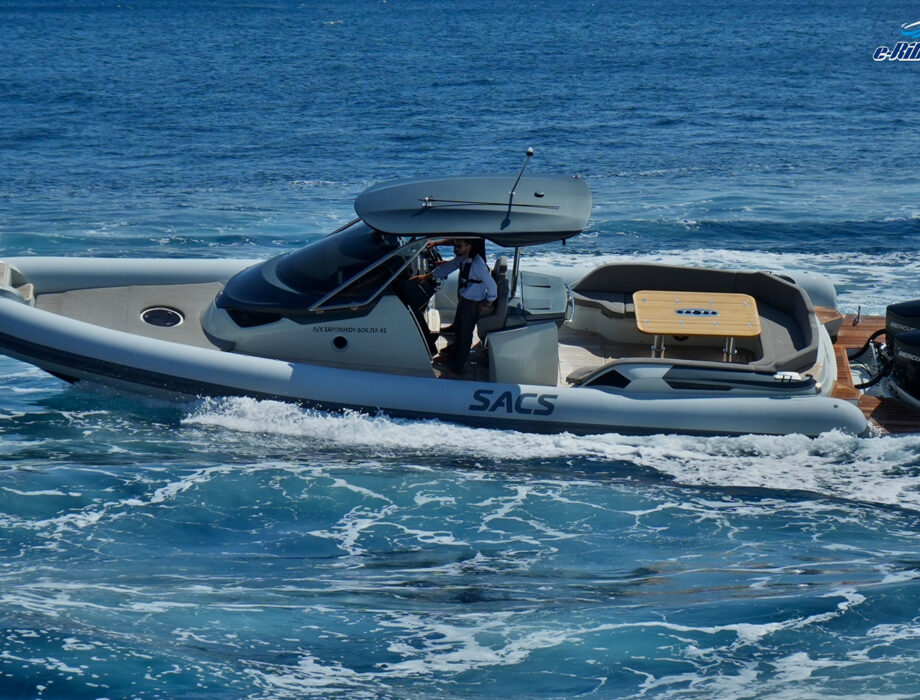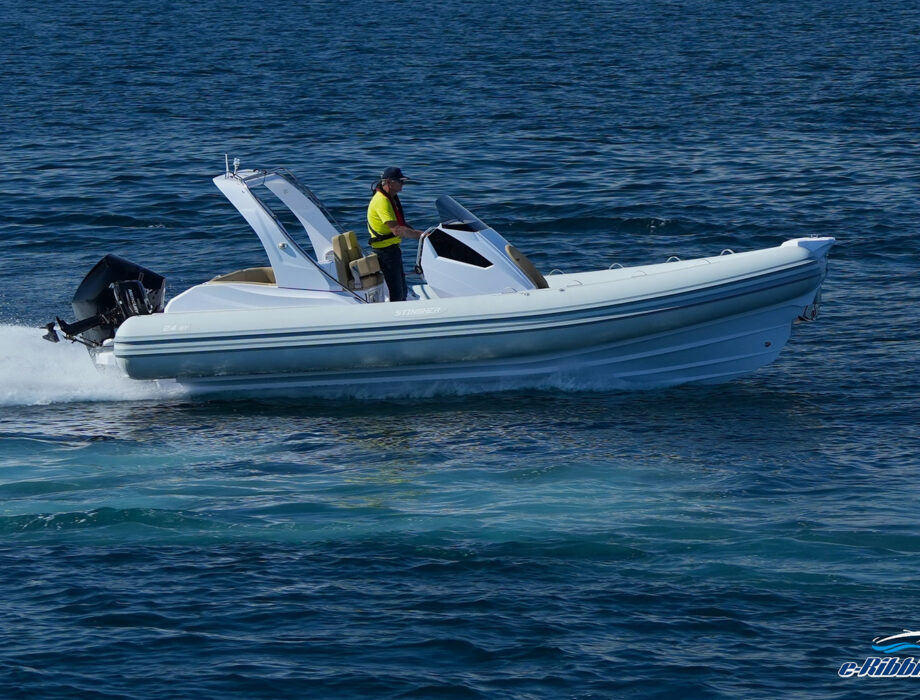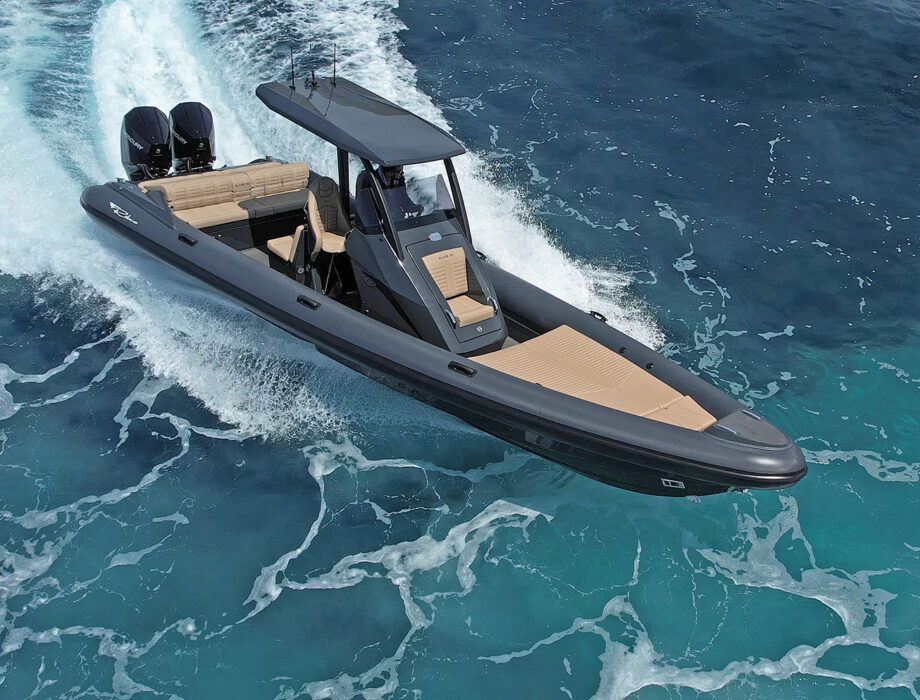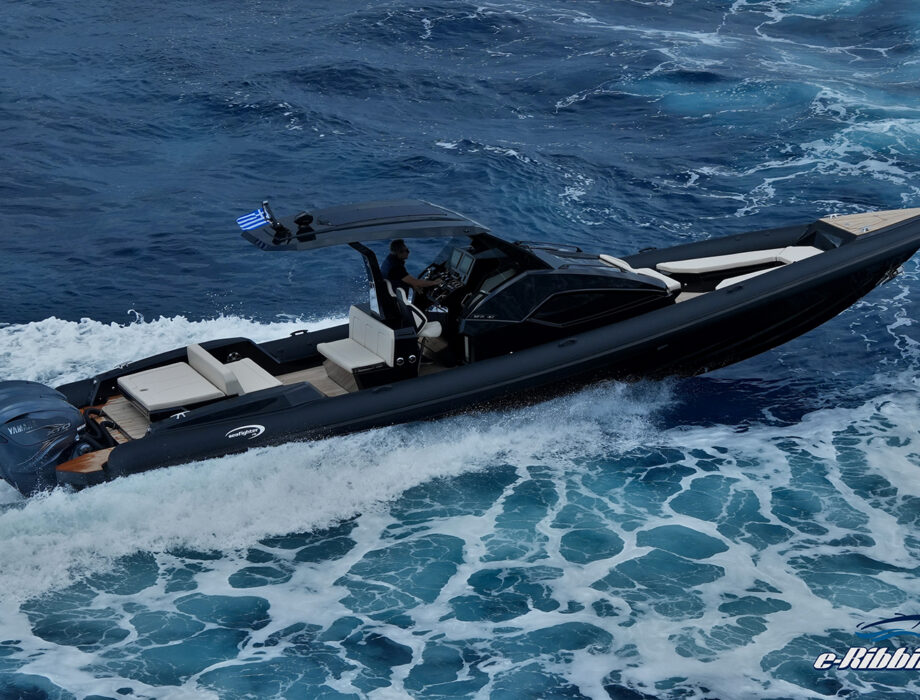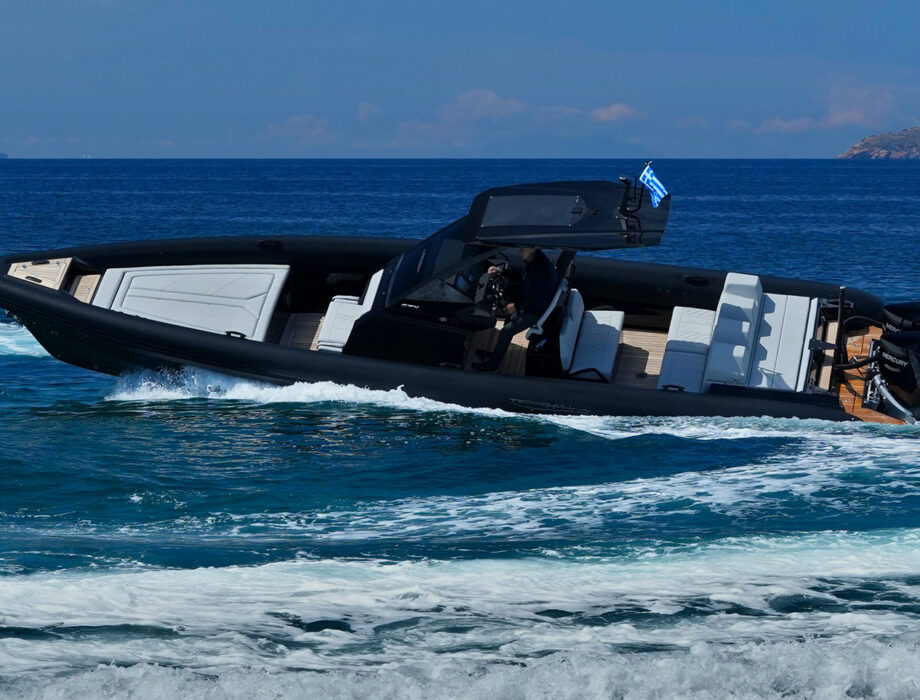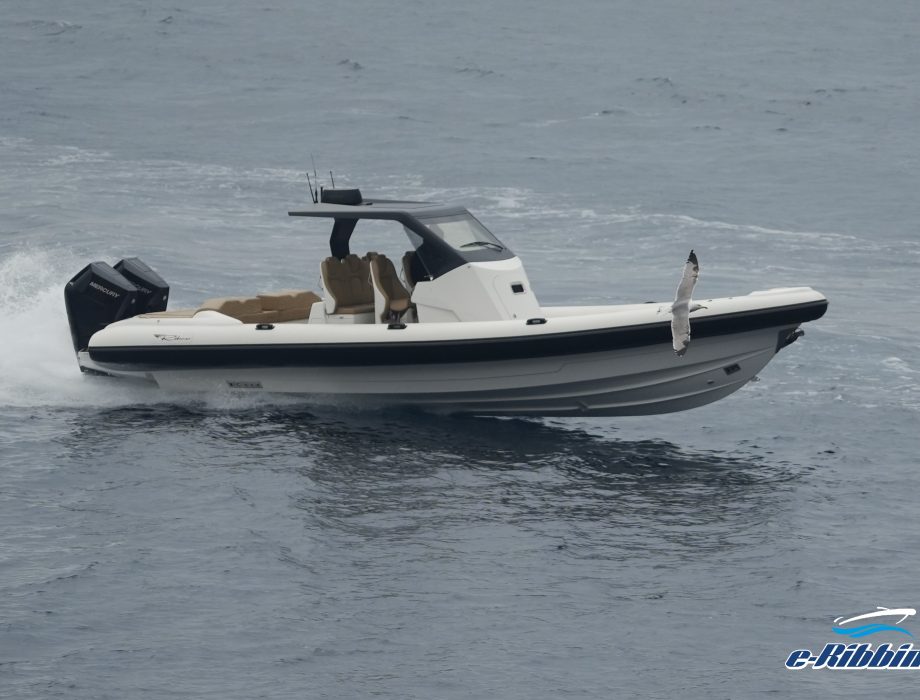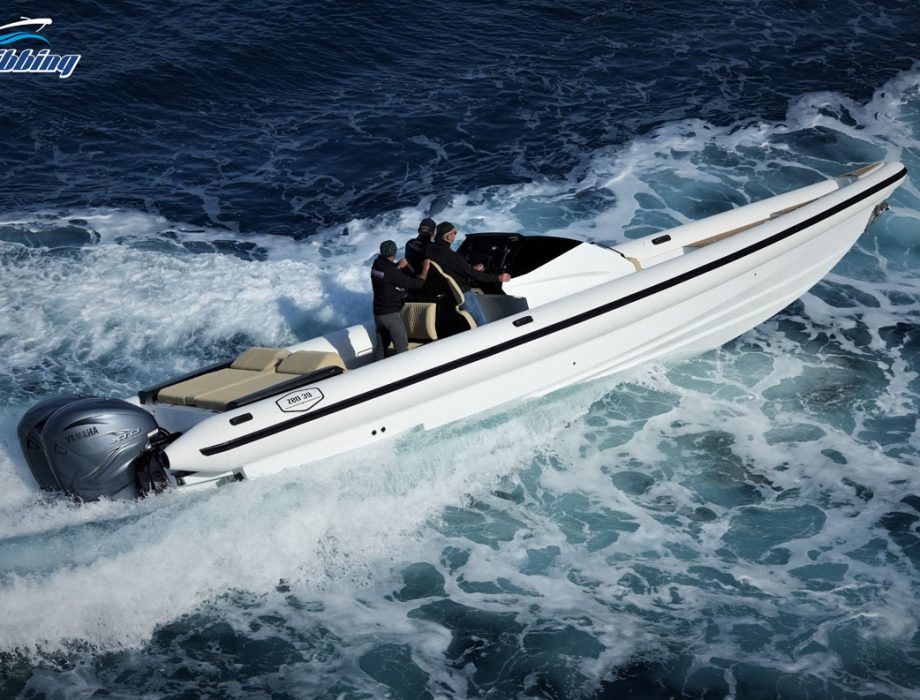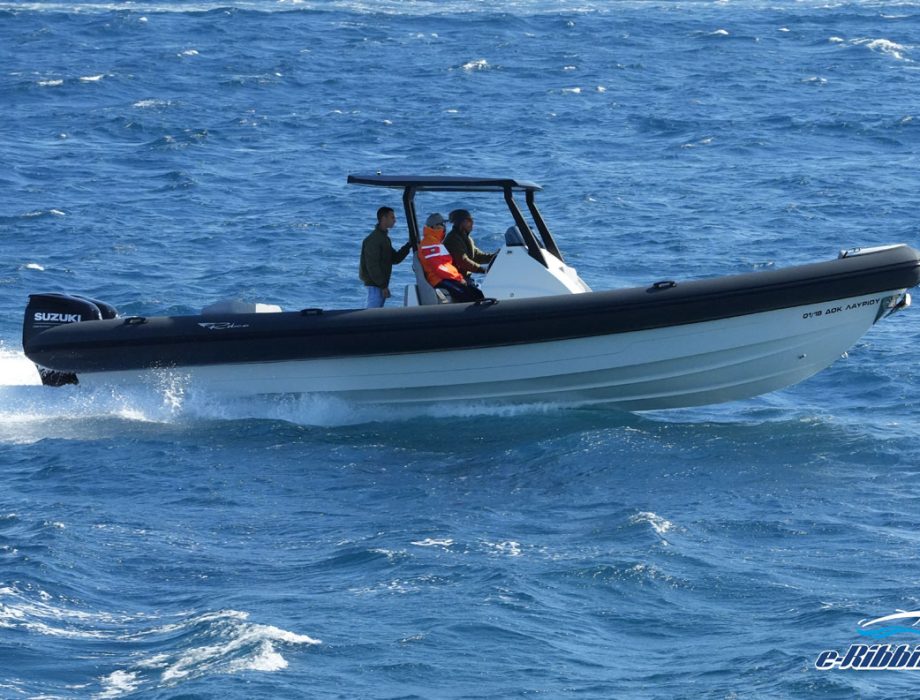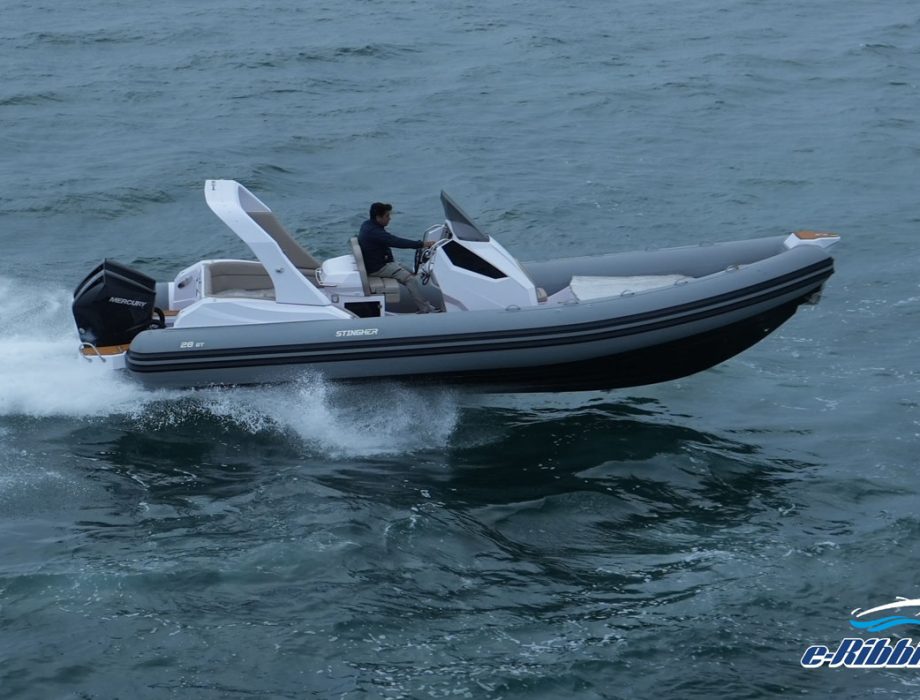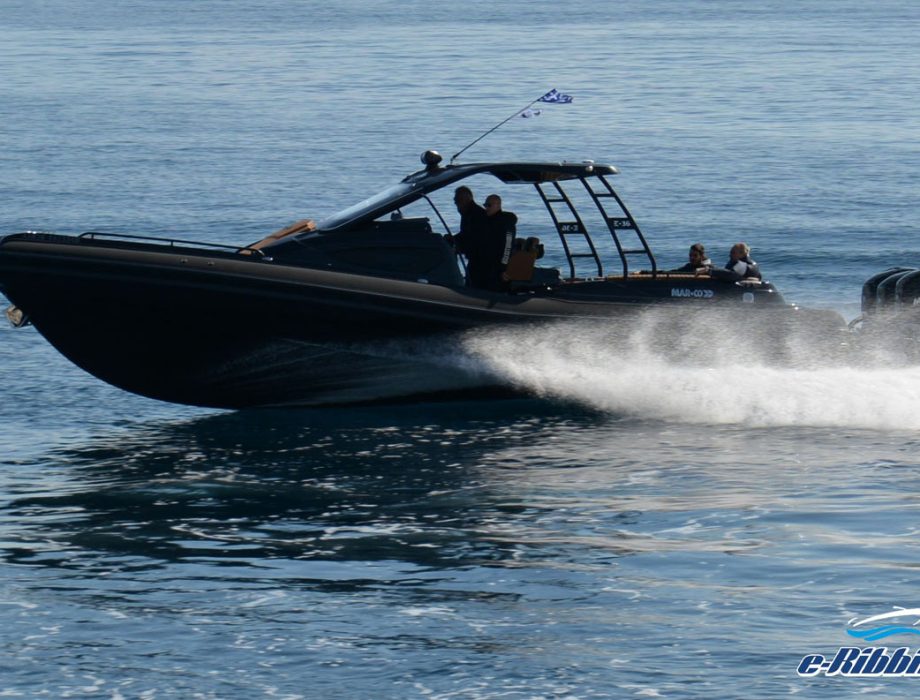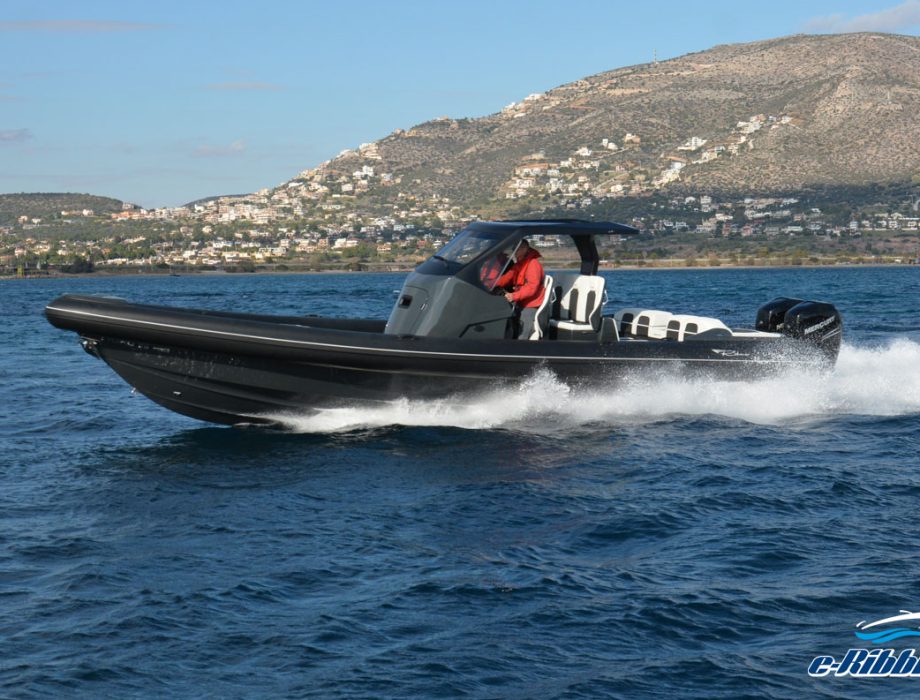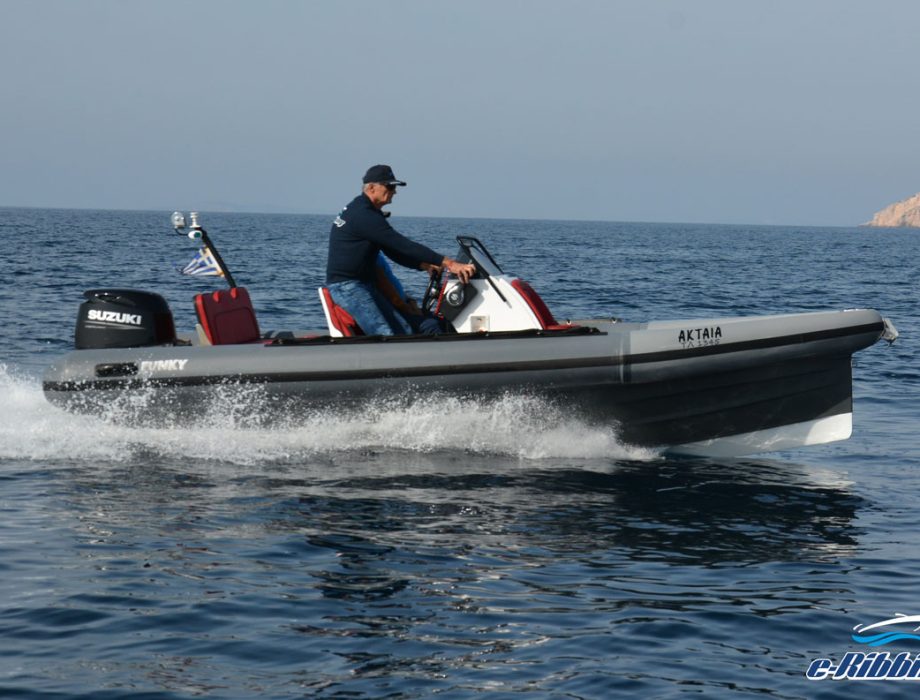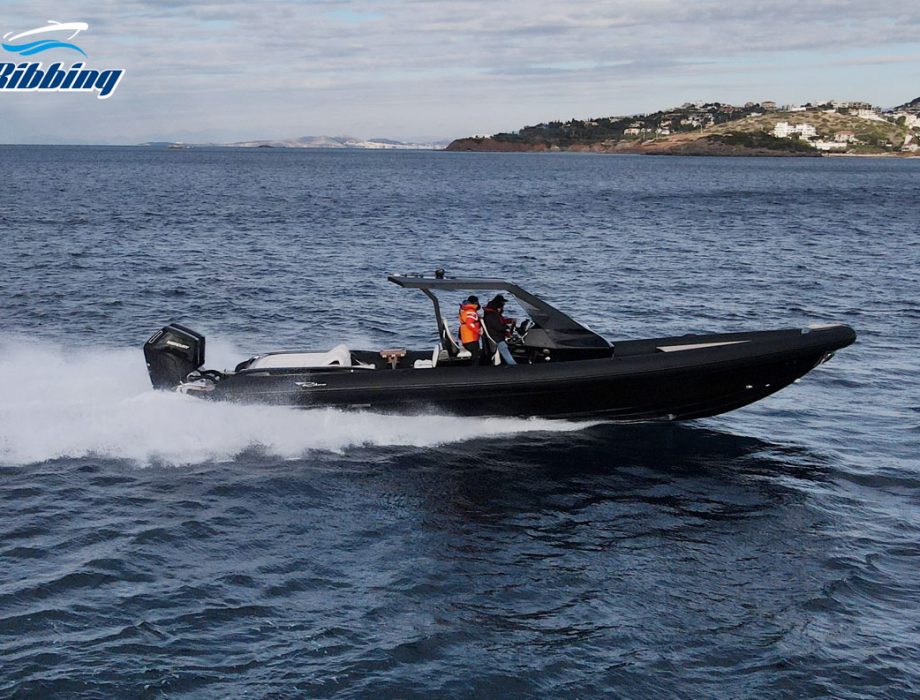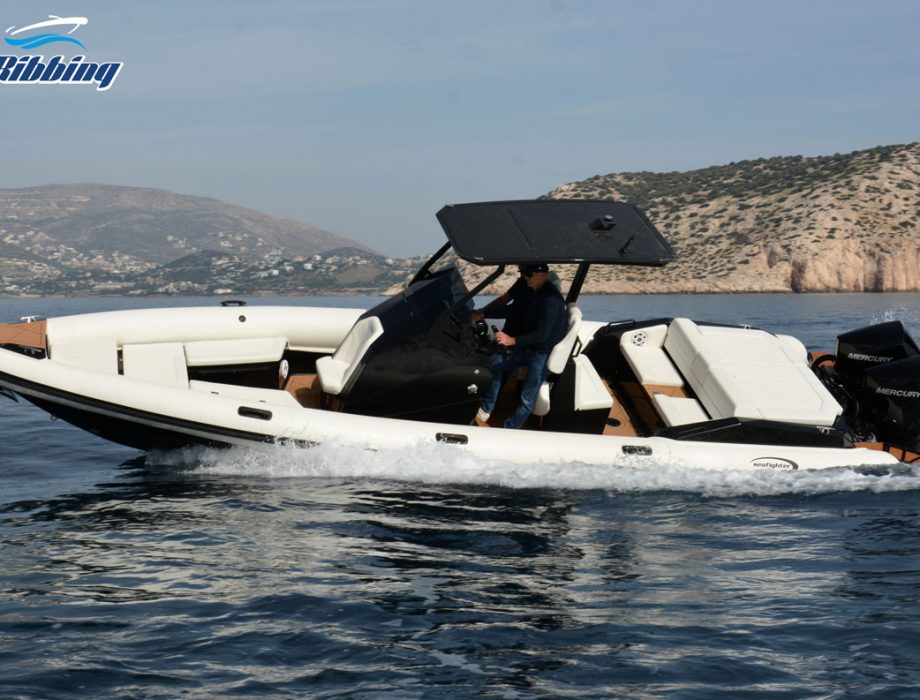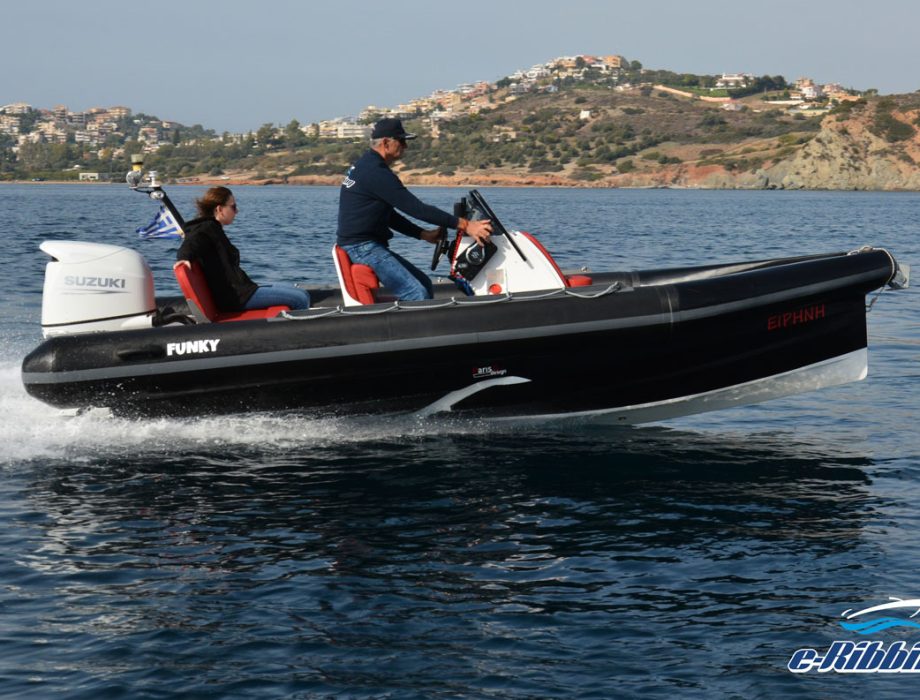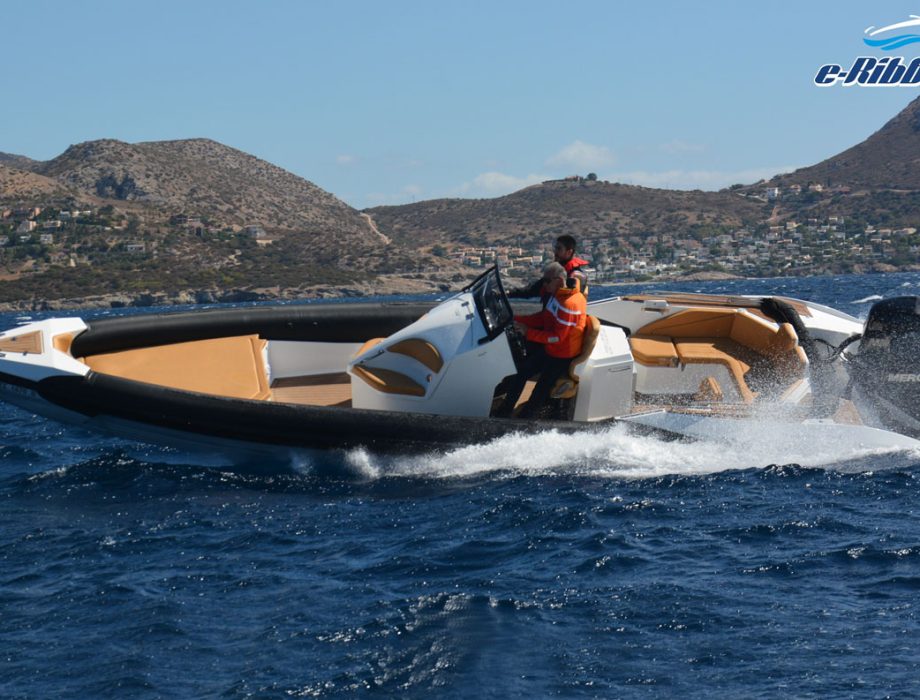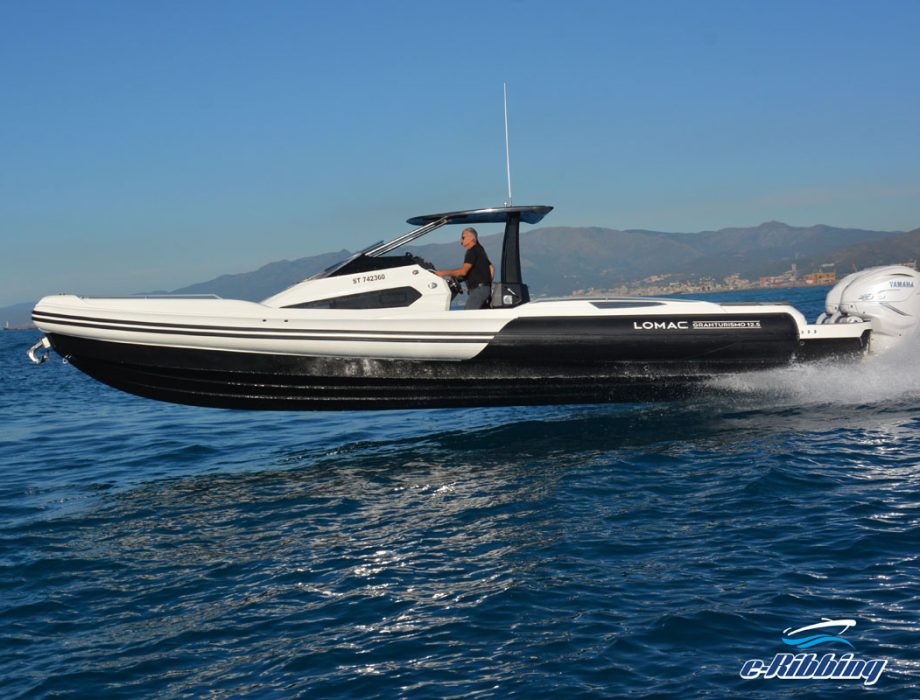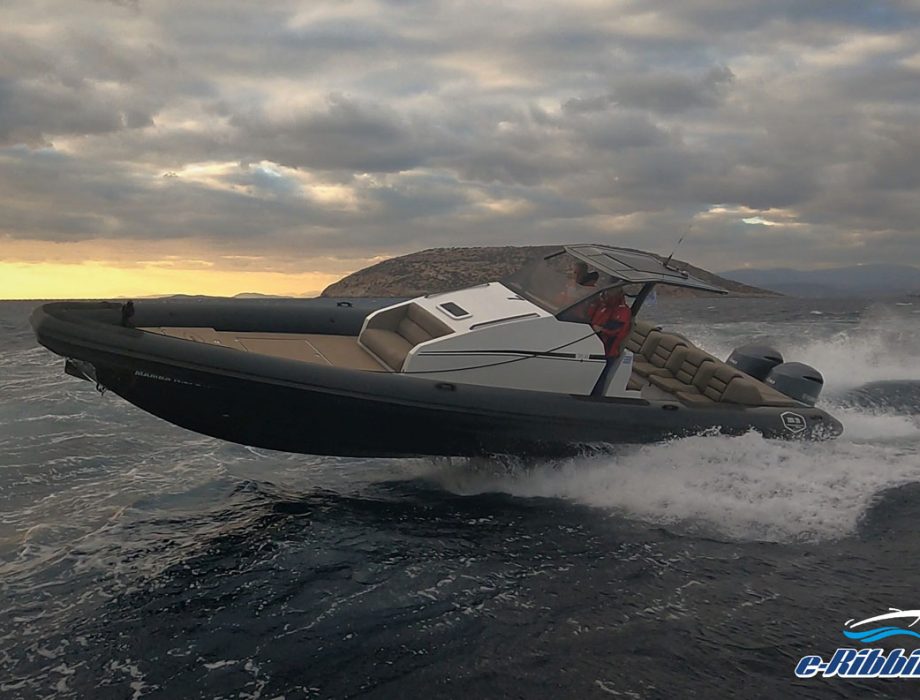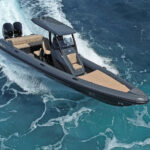
RIBCO Blade 30 – Twin Merc’s 3.4L 225hp
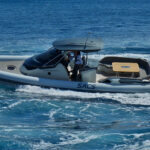
SACS Strider 11 – 2 x 300hp Verado 4.6L V8

RIBCO Blade 30 – Twin Merc’s 3.4L 225hp

SACS Strider 11 – 2 x 300hp Verado 4.6L V8
Stingher 24 GT – Mercury V8 4.6L 300hp Verado
The Italboats shipyard continues to pleasantly surprise us and proves once again that its goal is to be at the forefront of design and innovation by investing in new technologies and constantly upgrading its models. A living example is the new 24 of the GT series, which runs on a brand new hull that adopts the deep V of the Hellenic philosophy in combination with the configuration of the vertical bow aiming at high ride quality in bad weather conditions.
A few minutes of observation is enough to find out that the hull of Stingher 24 GT has many new design features that certainly do not leave us indifferent. In the foreground is the vertical bow which is very nicely designed and impresses from the first moment, while if we lean a little more we will see how the two lowest spray rails converge towards the keel where they stop at about the height of the boat's steering wheel. From there and back, a pad begins to form that reaches its maximum width of 28 cm in the transom area, reducing drag and improving planning time.
On each side of the hull we can see three spray rails that start from the entrance of the bow, making their presence particularly intense and the formation of the chine which maintains a constant height of just 7 centimeters throughout its route, from the bow to the transom of the boat.
On deck
The brand new Stingher 24 GT stands out for the harmony of its interior spaces and its redesigned console which borrows from the larger 28 GT, having all those necessary elements for comfortable living on deck.
The bow sundeck has a length of 1.55m, a maximum width that reaches 1.58m in the foot area, while in its forward part its width is 0.65m. Further forward is the locker, particularly deep due to the vertical bow, which accommodates the windlass while the anchor nestles in the entrance of the bow without disturbing and being an obstacle during our entry or exit from the boat.
The hard nose is of limited dimensions so as not to alter the aesthetics of the Rib, while providing the necessary space for our boarding or disembarking. Under the large sundeck cushion is the boat's largest storage space that can accommodate all the necessary equipment as well as much of our luggage, while in its forward part there is a large hatch that gives easy access to the anchor’s locker.
The console is very nicely designed and centrally located leaving comfortable passageways to the port and starboard of it, maximum width of 35 cm, for our unhindered back and forth movement, but the free space between it and the bow sundeck is quite limited, being only 25 cm wide centimeters.
Inside it is housed the separate bathroom and toilet space with dimensions of 0.88m x 0.96m x 1.60m, while in its rear part there is a large panel which, if removed, gives us comfortable access to the electrical console installation.
The instrument panel, made of carbon fiber, is large enough to accommodate even large navigation devices as well as the entire electronic equipment of the boat.
The steering wheel is placed on the port, the engine control in the center while a small glove box on the starboard is particularly useful for placing small items
But what we especially liked is that the console has a large width and height, like the windshield too, offering ideal protection to both the captain and the co-pilot from wind and spray, without at the same time sacrificing the good visibility towards the bow which is wonderful.
It is remarkable that whether we drive in a semi-upright position or sit in the comfortable bucket seats, the visibility to the bow and the horizon is very good.
The helmsman's seats are separate and recline allowing the driving position to be seated or standing, have a common backrest and are fitted onto the polyester structure that forms the boat's external kitchen.
A stainless steel refrigerator with a capacity of 50 liters is placed under the seats, while behind them is the sink and the cooking hob.
In the stern area, the maximum width of the deck reaches 1.56 meters and directly behind is the 1.69m wide 4-seater sofa, the backrest of which falls back thus increasing the space of the sundeck while at the same time offering a particularly comfortable access to engine area and swimming platform.
In front of the stern settee, on the lateral surfaces of the polyester gunwales, there are two reclining small seats which, in combination with the reclining table located behind the wet bar, form a small and very useful dining area for four people.
On the back sides of the gunwales we find two small hatches that, by lifting them, reveal very useful storage spaces, ideal for placing long objects.
At sea
Our test Rib was equipped with Mercury's 300hp 8-cylinder engine, the lower unit of which was turning a 4-blade 14 5/8΄΄x 21΄΄ Revolution propeller with a 1.85:1 gear ratio. We were a crew of 3 with all the equipment on board and 100 liters of fuel.
I was eager to see the behavior of the 24 GT's promising new hull, so I directly turned the bow against the sharp and short waves that might not have been capable of disturbing our ride, but were enough to draw enough conclusions.
The solid construction was evident from the first moment and everything showed that I had a very well built boat in my hands without the slightest annoying noise even when we were running at full throttle bridging the crests of the waves.
In any case the Rib was traveling very well and safely, looking very well balanced and maintaining an excellent angle of ride throughout the whole rpm range. The hull damping was of a high standard, cushioning our ride very well while keeping the spray off the deck. Stingher 24 GT showed the same very good behavior even when we put the waves astern with its vertical bow going effortlessly over the short crests, while cutting through some of the taller ones we encountered with characteristic ease.
For a long time I was holding the throttle lever firmly in the same position and, with a slight trim out, I let the Rib travel us at 32 knots. Consuming 1.2 liters per nautical mile24 GT showed us that it can maintain this cruising speed with great comfort and quickly cover long distances while having very good range.
The throttle response was very good, as was the stability of the hull we received in the sharp maneuvers, while the large diameter air chambers did not allow the Rib to take even the slightest inclination during the tight turns we attempted.
The vessel was planing in 4 seconds after a slight rise of her bow and was standing on plane at 2100 rpm maintaining a speed of 9.5 knots. She accelerated to 30 knots in 6 seconds and reached 40 knots in 10 seconds.
At 3000 rpm we were cruising at 22 knots burning 1 liter per nautical mile, while at 3500 rpm our speed was 28 knots with the fuel consumption remaining almost constant at 1.1 liters per mile, where we had an enjoyable and relaxing ride. These were also the most economical cruising speeds we recorded, which we can maintain on our trips taking the maximum autonomy that this particular boat-engine combination can give us.
At 4000 rpm we were running at 33 knots burning 1.3 liters per mile while at 4500 rpm our speed was 38 knots consuming 1.4 liters per nautical mile.
At full throttle we reached a top speed of 50 knots with the engine reaching 5800 rpm, but not the maximum limit recommended by the manufacturer.
You can see the detailed measurements in the table below:
Taking a closer look at the above table we will see that the slip values we recorded are very good, but if we are willing to experiment we can improve them even more.
It is worth noting that although Stingher 24 GT fell into the water for the first time, she left us with the best impressions and proved that her newly designed hull works very well and can travel us comfortably and safely to any destination.
It is certain that if we shorten the pitch and apply a 14 5/8΄΄x 19΄΄ Revolution propeller we will allow the engine to raise another 300 rpm and thus work more correctly when we load the boat with the usual loads, while at the same time the throttle response will be improved even more and the boat will gain more handling flexibility which we will especially appreciate when traveling in bad weather conditions.
Manufacturer:
Italboats s.l.r.
Main factory & Head office
Zona Industriale SP 79 Presicce-Alessano, 73054 Presicce (LE)
Italy
Tel: +39 (0)833 722 553
www.italboats.com
Hellas’ dealer:
Delipoulios Marine
Thessalonikis-Peraias 21 - Thermi 57500
Tel.: +30 23920 92298
www.delipoulios-marine.gr




